3rd Workshop on 5G Technologies for First Responder and Tactical Networks - Speaker/Track Details
| Main/Program | About Workshop | Speaker/Track Details |

Virtual Event || On-demand through 15 December 2020
Register for Free at this LINK.
NOTE: The broadcast will convert to on-demand after 23 October. You can still register up until 15 December to access sessions.
For questions or more information, please email Ashutosh Dutta at This email address is being protected from spambots. You need JavaScript enabled to view it..
Keynotes and Inivited Speaker Plenary
Opening Remarks | 8:30 am
 Speaker: Andrew C. Oak, JHU/ APL
Speaker: Andrew C. Oak, JHU/ APL
Bio: Mr. Andrew C. Oak was appointed Mission Area Executive (MAE) for Homeland Protection at the Johns Hopkins University Applied Physics Laboratory (JHU/APL) on May 26, 2020. In this role, he oversees research and development (R&D) to protect the United States from a variety of asymmetric threats that include chemical and biological attacks, critical infrastructure attacks, and foreign intelligence operations. This amounts to approximately 350 full-time equivalent staff of effort, spanning diverse disciplines such as data analytics, cyber, communications, sensors, physical sciences, and biology. As the nation’s largest University Affiliated Research Center, JHU/APL makes critical contributions to a wide variety of nationally significant technical and scientific challenges for the Department of Defense, the Intelligence Community, the Department of Homeland Security, and other Government sponsors.
Prior to his current appointment, Mr. Oak served as the Acting MAE for JHU/APL’s Special Operations Mission Area (SOMA). In the SOMA, he defined the strategy and oversaw execution of JHU/APL’s R&D to meet the needs of sponsors across the Special Operations, National Intelligence, and counter weapons of mass destruction communities. During his tenure, Mr. Oak revectored this R&D, about 500 full-time equivalent staff of effort, to focus on helping SOMA sponsors achieve mission success despite peer competition and the availability of advanced technology to potential adversaries.
Earlier in his JHU/APL career, Mr. Oak served in a variety of technical and technical leadership roles spanning the communications and cyber domains. He stood up and served as Supervisor of the Cyber Warfare Systems Group, and previously served as the Chief Engineer of the Communication and Network Systems Group. He has published conference papers and taught classes in radio frequency (RF) communications and networking systems, and served as a member for the RF Panel of the National Intelligence University’s Emerging Technologies Conference on Foundational Cyber Technology. He has also served on a Defense Science Board panel addressing cyber supply chain issues, with the panel receiving a SANS 2018 Difference Maker Award for its efforts.
Mr. Oak joined APL in 1996, after earning a Master of Science degree in Electrical Engineering from the University of Virginia and a Bachelor of Science degree in Electrical Engineering from the University of Massachusetts at Amherst.
Keynote 1 | 8:45 am
 Speaker: Russell Becker, DHS S&T
Speaker: Russell Becker, DHS S&T
Title: Leveraging 5G for DHS Missions
Bio: Russell Becker serves as the Director, Office for Interoperability and Compatibility. He is also the acting Deputy, Innovative Systems Branch of DHS S&T’s Technology Centers Division which focuses on intelligent sensors and autonomous systems; resilient communications equipment, data, and networks; and enhanced biometrics and identity capabilities to enhance knowledge, advance state of the art, inform investments and drive actions in national threats, hazards, and risks. Prior to his role in DHS S&T, Russell served 21 years as an active duty US Marine Corps officer. For the first 5 years, Russell served as an Infantry Officer. He then served the remaining 16 years as a Communications Officer in several operational positions with a three-year stint as an Acquisitions Project Officer for narrow and wideband radio systems. Russell deployed once as an infantry platoon commander and once as Small Unit Weapons and Tactics Subject Matter Expert conducting Anti-terrorism and Force Protection assessments with the Joint Security Directorate Forward, US Central Command. As a Captain, Russell completed four combat deployments to Iraq. In his final tour as a Lieutenant Colonel, Russell led in two different billets within US European Command. He first led the Theater Satellite Communication, Nuclear Command, Control and Computers, Theater Frequency Spectrum and Communications Security offices as the Branch Chief, C4 Support Operations Division, Joint Command, Control, Communications, Computers (C4)/Cyber Directorate. For the final two and a half years, Russell moved to the Interoperability, Cyber Engagements & Exercises Division/ J67 and served as the US Senior exercise planner for NATO interoperability exercises Steadfast Cobalt 2017 and 2018 and US lead C4/Cyber planner for Exercise Trident Juncture 2018. Russell holds a Master of Science in Electrical Engineering from the Naval Postgraduate School, Monterey, CA.
Invited Speaker 1 | 9:20 am Speaker: Dr. Monisha Ghosh, Federal Communications Commission (FCC)
Speaker: Dr. Monisha Ghosh, Federal Communications Commission (FCC)
Title: Modernizing the Wireless Priority Service (WPS) rules
Bio: Dr. Monisha Ghosh is serving as the Chief Technology Officer (CTO) of the Federal Communications Commission (FCC) since Jan. 13, 2020. Prior to this, she was at NSF as a rotating Program Director since September 2017, in the Computer and Network System (CNS) division within the Directorate of Computer & Information Science and Engineering (CISE) where she managed wireless networking research within the Networking Technologies and Systems (NeTS) program. Dr. Ghosh is also a Research Professor at the University of Chicago, with a joint appointment at the Argonne National Laboratories, where she conducts research on wireless technologies for the IoT, 5G cellular, next generation Wi-Fi systems and spectrum coexistence. Prior to joining the University of Chicago in September 2015, she worked at Interdigital, Philips Research and Bell Laboratories, on various wireless systems such as the HDTV broadcast standard, cable standardization and on cognitive radio for the TV White Spaces. She has been an active contributor to many industry standards and was recognized with a Certificate of Appreciation for her outstanding contributions to IEEE 802.22. She is a Fellow of the IEEE.
She received her Ph.D. in Electrical Engineering from the University of Southern California in 1991, and her B. Tech from the Indian Institute of Technology, Kharagpur (India) in 1986.
Invited Speaker 2 | 9:50 am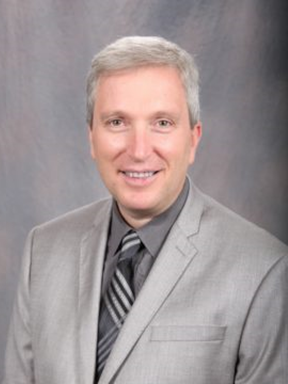 Speaker: Dr. Alex Sprintson, National Science Foundation (NSF)
Speaker: Dr. Alex Sprintson, National Science Foundation (NSF)
Title: Securing Next-Generation Wireless Networks: Challenges and Opportunities
Bio: Dr. Alex Sprintson joined NSF as a rotating Program Director in September 2018, in the Directorate of Computer & Information Science and Engineering (CISE). He manages networking research within the Networking Technologies and Systems (NeTS) and Secure and Trustworthy Cyberspace (SaTC) programs. He also serves as a program manager for the NSF/Intel Partnership on Machine Learning for Wireless Networking Systems (MLWiNS) program, Spectrum Innovation Initiative (SII), and Platforms for Advanced Wireless Research (PAWR). Alex Sprintson is a faculty member in the Department of Electrical and Computer Engineering, Texas A&M University, College Station, where he conducts research on wireless network coding, distributed storage, and software-defined networks. Dr. Sprintson received the Wolf Award for Distinguished Ph.D.students, the Viterbi Postdoctoral Fellowship, the TAMU College of Engineering Outstanding Contribution Award, and the NSF CAREER award. From 2013 and 2019, he served as an Associate Editor of the IEEE Transactions on Wireless Communications. He has been a member of the Technical Program Committee for the IEEE Infocom 2006-2021.
Invited Speaker 3 | 10:20 am Speaker: Chris Baker, First Responder Network Authority
Speaker: Chris Baker, First Responder Network Authority
Title: Incident Data Pain Points – A first responder perspective of data usage in a large incident response
Bio: Chris Baker is a Senior Public Safety Advisor with the First Responder Network Authority assigned to the Northern California area and as an aviation subject matter expert with over 32 years as a first responder. Chris retired as a career Battalion Chief/Paramedic and Investigator with the Roseville (CA) Fire Department with assignments including operations, investigations, administration, technology, homeland security, and safety. Chris has led various public safety technology projects, and held operational and communications roles on large incidents and incident management teams. Chris’s experience includes 20 years as a peace officer, and prior service as an engineer in the wireless industry constructing and operating cellular networks across the U.S., training engineers, and developing wireless testing tools. Chris holds a Bachelor of Science in Electrical and Electronic Engineering, Juris Doctor, and is a registered electrical engineer and member of the State Bar in California. He currently volunteers with the Civil Air Patrol as a pilot, and as volunteer chief officer and paramedic in Plumas County, CA.
Keynote 2 | 2:45 pm Speaker: Dr. Joseph B. Evans, Department of Defense (DoD)
Speaker: Dr. Joseph B. Evans, Department of Defense (DoD)
Title: DoD 5G to Next G Initiative
Bio: Dr. Joseph B. Evans is the inaugural Technical Director for 5G, reporting directly to the Under Secretary of Defense for Research and Engineering within the Office of the Secretary of Defense. Dr. Evans is responsible for coordinating 5G efforts across the Department of Defense, oversees and directs the Department's “5G to Next G” research and development portfolio, and advises the Under Secretary of Defense for Research and Engineering on 5G-related topics.
Dr. Evans served as a Program Manager in the DARPA Strategic Technology Office from 2015 to 2019. While there, he started the SHARE (Secure Handhelds on Assured Resilient networks at the tactical Edge) and GCA (Geospatial Cloud Analytics) programs, and managed the Mobile Hotspots, RadioMap, SSPARC (Shared Spectrum Access for Radar and Communications), CommEx (Communications Under Extreme RF Spectrum Conditions), WND (Wireless Network Defense), and DyNAMO (Dynamic Network Adaptation for Mission Optimization) programs.
Among other service activities, Dr. Evans served as a Council member for the Computing Community Consortium Council from 2012 to 2015, and as a Member-at-Large on the IEEE Communications Society Board of Governors from 2009 to 2011.
Dr. Evans received the B.S.E.E. degree from Lafayette College in 1983, and the M.S.E., M.A., and Ph.D. degrees from Princeton University in 1984, 1986, and 1989, respectively. He is an IEEE Fellow.
Panel: Understanding the Impact of 5G on Operations | 3:20 pm Speaker: Ruth Vogel, Johns Hopkins Applied Physics Laboratory (JHAPL)
Speaker: Ruth Vogel, Johns Hopkins Applied Physics Laboratory (JHAPL)
Bio: Ruth Vogel has more than 25 years of experience working in homeland security and emergency management at federal, state and local levels. She is currently the Emergency Response Systems Program Manager at the Johns Hopkins Applied Physics Laboratory (JHAPL). She provides program management, systems engineering, data science and first responder subject matter expertise to a number of sponsors to include the Department of Homeland Security Science and Technology Directorate (DHS S&T), the Federal Emergency Management Agency (FEMA) and DHS Cybersecurity and Infrastructure Security Agency.
Ms. Vogel previously worked for the Maryland Emergency Management Agency (MEMA), where she was the Director of the Exercise and Training Branch. Prior to working for MEMA, she was employed by the City of Baltimore and served as the City’s Director for Acute Communicable Disease and the Preparedness and Response Program. Ms. Vogel is also a Critical Care Nurse and Emergency Medical Technician (EMT). She has served in a variety of first responder roles to include emergency medical services, search and rescue, incident command, state liaison for National Special Security Events to the National Capital Region, and continues to serve on a variety of emergency management advisory committees.
Ms. Vogel has undergraduate degrees from the University of Minnesota in Nursing, University of North Dakota in Health and Medical Services, and Epidemiology, and a graduate degree in Public Health from the Johns Hopkins University. She has also completed graduate work in systems engineering and data science and holds a number of certifications in emergency management and incident command systems and is a Master Homeland Security Exercise and Evaluation Practitioner.
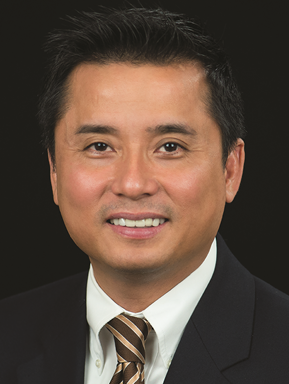 Speaker: Cuong Luu, DHS S&T
Speaker: Cuong Luu, DHS S&T
Bio: Cuong Luu serves as a Program Manager in the Office for Interoperability and Compatibility Technology Centers Branch under the Office of Science and Engineering Division within the U.S Department of Homeland Security’s Science and Technology Directorate. In this role, he is responsible for managing, researching, and coordinating in emerging technologies for communication systems. Mr. Luu has an extensive background in applied program and project management. His experience has focus on large, complex technology based projects with an emphasis on management of technology driven services. Cuong Luu experience includes telecommunication, network administration, Information Technology services, and federal and regional government agencies.
 Speaker: Rob Dew, DHS ECD
Speaker: Rob Dew, DHS ECD
Bio: Rob Dew is a Senior Technologist Advisor with the U.S. Department of Homeland Security (DHS), Cybersecurity and Infrastructure Security Agency (CISA) where he provides overall technical advisement on design, development, testing, and deployment of priority and interoperability of Next Generation Network Priority Services. He has over 25 years of wireless network design, systems engineering and operations experience and has consulted in the United States, Europe, Latin America, the Middle East, and Asia. He holds a B.S. in Electrical Engineering from Virginia Tech and a M.S. in Engineering Management from The George Washington University.
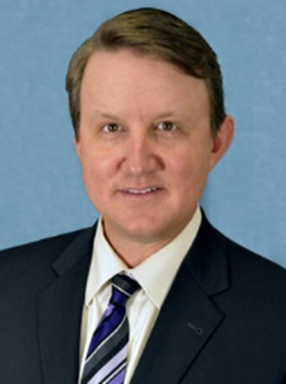 Speaker: Jeff Bratcher, First Responder Network Authority
Speaker: Jeff Bratcher, First Responder Network Authority
Bio: Jeff Bratcher is the Chief Technology and Operations Officer of the FirstNet Authority. Mr. Bratcher is a key leader involved with the shaping of the technology for the Nationwide Public Safety Broadband Network (NPSBN). He led the formation of the First Responder Network Authority technology teams as well as the state-of-the-art FirstNet Innovation and Technology lab located at the FirstNet office in Boulder, Colorado. Building upon his success as the Chief Technology Officer (CTO), Mr. Bratcher was also appointed to lead the Operations Office as the FirstNet Authority transitions its focus to the implementation of the nationwide FirstNet broadband network built with AT&T. Mr. Bratcher began his federal service in 2003 with the National Telecommunications and Information Administration (NTIA) Institute for Telecommunication Sciences (ITS) also located in Boulder, Colorado. Prior to joining federal service he worked for ten years within the wireless private sector deploying several of the first digital cellular systems in U.S. and international markets. Mr. Bratcher received his BS in Electrical Engineering from Texas Tech University and his MS in Telecommunications from Southern Methodist University.
Closing Remarks | 4:20 pm Speaker: Rob Bartholet, Johns Hopkins Applied Physics Laboratory (JHAPL)
Speaker: Rob Bartholet, Johns Hopkins Applied Physics Laboratory (JHAPL)
Bio: Robert (Rob) Bartholet is the supervisor of the Johns Hopkins University Applied Physics Laboratory’s (APL) Communications Systems Branch, which focuses on transforming the communications capabilities of APL's government sponsors to provide a decisive advantage in their critical missions. Bartholet joined APL as a communications systems engineer, serving in roles ranging from technical contributor, project manager, and organizational leader. Prior to joining the Laboratory, Bartholet completed 28 years of active duty in the U.S. Army, with three successful commands of field artillery units. He spearheaded the Army's efforts to build battlefield digital communications networks for tactical ground and air maneuver units, served as an assistant professor at the U.S. Military Academy at West Point, and is a plank owner of the Defense Information Systems Agency Command Center. Bartholet has a B.S. in electrical engineering from the U.S. Military Academy, an M.S. in computer science from the University of Virginia and an M.S. in strategic studies from the U.S. Army War College.
*NOTE: All times are Eastern Time U.S.
| Presentation Time | Presentation Title | Authors |
| 11:00 am | Joint MIMO-Radar-MIMO-Communications in the 5G Era | Kumar Vijay Mishra (United States Army Research Laboratory, USA) |
| 11:20 am | Adversarial Machine Learning for 5G Security | Yalin E Sagduyu (Intelligent Automation, Inc., USA); Tugba Erpek (Virginia Tech, USA) |
| 11:40 am | Potentials and Challenges of 5G mmWave Technologies in Public Safety Scenarios | Michele Zorzi (University of Padova, Italy) |
| 12:00 pm | End-to-end Simulations for 5G Public Safety Scenarios | Michele Polese (Northeastern University, USA) |
| 1:00 pm | Exploring 5G Dual-Connectivity for Increased Security | Jessica Bridgland (JHUAPL, USA); Cherita L Corbett (Johns Hopkins University Applied Physics Lab, USA); Hyunwoo Warren Kim (Johns Hopkins University Applied Physics Laboratory, USA); Ryan Pepito (JHU/APL, USA) |
| 1:20 pm | Fundamentals and Open Problems for Post-Disaster Communications |
Maurilio Matracia and Mustafa A Kishk (King Abdullah University of Science and Technology, Saudi Arabia) |
| 1:40 pm | Autonomous Federated Byzantine Agreement for Decentralized Access in 5G Emergency Service and First Responder Networks | Steven Platt and Miquel Oliver (Universitat Pompeu Fabra, Spain) |
| 2:00 pm | SDN-Enabled Space-Air-Ground Networks: Towards a Convergence | Nariman Torkzaban, Anousheh Gholami and John S. Baras (University of Maryland, USA); Chrysa Papagianni (Nokia Bell Labs, Belgium) |
| 2:20 pm | Securing the 5G Era | Nicolas Sklavos (University of Patras, Greece) |
*NOTE: All times are Eastern Time U.S.
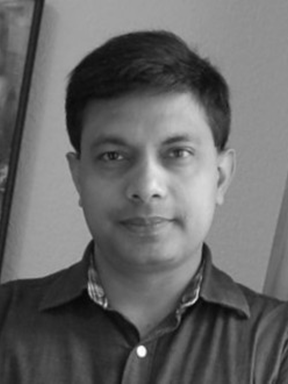 Dr. Kumar Vijay Mishra (S'17-M'15-SM'18) obtained a Ph.D. in electrical engineering and M.S. in mathematics from The University of Iowa in 2015, and M.S. in electrical engineering from Colorado State University in 2012, while working on NASA’s Global Precipitation Mission Ground Validation (GPM-GV) weather radars. He received his B. Tech. summa cum laude (Gold Medal, Honors) in electronics and communication engineering from the National Institute of Technology, Hamirpur (NITH), India in 2003. He is currently U. S. National Academies Harry Diamond Distinguished Fellow at the United States Army Research Laboratory (ARL), Adelphi; Technical Adviser to Singapore-based automotive radar start-up Hertzwell; and honorary Research Fellow at SnT - Interdisciplinary Centre for Security, Reliability and Trust, University of Luxembourg. Previously, he had research appointments at Electronics and Radar Development Establishment (LRDE), Defence Research and Development Organisation (DRDO) Bengaluru; IIHR - Hydroscience & Engineering, Iowa City, IA; Mitsubishi Electric Research Labs, Cambridge, MA; Qualcomm, San Jose; and Technion - Israel Institute of Technology. He is the recipient of the American Geophysical Union Editors' Citation for Excellence (2019), Royal Meteorological Society Quarterly Journal Editor's Prize (2017), Viterbi Postdoctoral Fellowship (2015, 2016), Lady Davis Postdoctoral Fellowship (2017), DRDO LRDE Scientist of the Year Award (2006), NITH Director’s Gold Medal (2003), and NITH Best Student Award (2003). He has received Best Paper Awards at IEEE MLSP 2019 and IEEE ACES Symposium 2019. He has been the Associate Editor of IEEE Transactions on Aerospace and Electronic Systems. His research interests include radar systems, signal processing, remote sensing, and electromagnetics.
Dr. Kumar Vijay Mishra (S'17-M'15-SM'18) obtained a Ph.D. in electrical engineering and M.S. in mathematics from The University of Iowa in 2015, and M.S. in electrical engineering from Colorado State University in 2012, while working on NASA’s Global Precipitation Mission Ground Validation (GPM-GV) weather radars. He received his B. Tech. summa cum laude (Gold Medal, Honors) in electronics and communication engineering from the National Institute of Technology, Hamirpur (NITH), India in 2003. He is currently U. S. National Academies Harry Diamond Distinguished Fellow at the United States Army Research Laboratory (ARL), Adelphi; Technical Adviser to Singapore-based automotive radar start-up Hertzwell; and honorary Research Fellow at SnT - Interdisciplinary Centre for Security, Reliability and Trust, University of Luxembourg. Previously, he had research appointments at Electronics and Radar Development Establishment (LRDE), Defence Research and Development Organisation (DRDO) Bengaluru; IIHR - Hydroscience & Engineering, Iowa City, IA; Mitsubishi Electric Research Labs, Cambridge, MA; Qualcomm, San Jose; and Technion - Israel Institute of Technology. He is the recipient of the American Geophysical Union Editors' Citation for Excellence (2019), Royal Meteorological Society Quarterly Journal Editor's Prize (2017), Viterbi Postdoctoral Fellowship (2015, 2016), Lady Davis Postdoctoral Fellowship (2017), DRDO LRDE Scientist of the Year Award (2006), NITH Director’s Gold Medal (2003), and NITH Best Student Award (2003). He has received Best Paper Awards at IEEE MLSP 2019 and IEEE ACES Symposium 2019. He has been the Associate Editor of IEEE Transactions on Aerospace and Electronic Systems. His research interests include radar systems, signal processing, remote sensing, and electromagnetics.
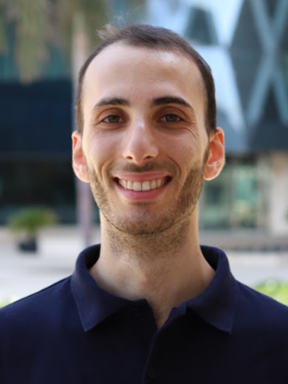 Maurilio Matracia received his B.Sc. and M.Sc. degrees in Energy and Electrical Engineering from the University of Palermo (UNIPA), Italy, in 2017 and 2019, respectively. He is currently pursuing the Ph.D. degree with the Computer, Electrical and Mathematical Science and Engineering Division at King Abdullah University of Science and Technology (KAUST), Saudi Arabia. His current research interest is stochastic geometry, with special focus on aerial platforms and other 5G technologies for rural and emergency communications.
Maurilio Matracia received his B.Sc. and M.Sc. degrees in Energy and Electrical Engineering from the University of Palermo (UNIPA), Italy, in 2017 and 2019, respectively. He is currently pursuing the Ph.D. degree with the Computer, Electrical and Mathematical Science and Engineering Division at King Abdullah University of Science and Technology (KAUST), Saudi Arabia. His current research interest is stochastic geometry, with special focus on aerial platforms and other 5G technologies for rural and emergency communications.
 Dr. Yalin Sagduyu is the Director of Networks and Security Division at Intelligent Automation, Inc. (IAI). He received his Ph.D. degree in Electrical and Computer Engineering from University of Maryland, College Park. At IAI, he directs a broad portfolio of R&D projects on 5G, network communications, security, and machine learning. His research interests are in 5G, wireless communications, networks, security, cognitive radio, optimization, machine learning, adversarial machine learning, and data analytics. He served as a Track Chair at IEEE PIMRC, IEEE GlobalSIP, and IEEE MILCOM, and in the organizing committee of IEEE GLOBECOM. He organized and chaired workshops at IEEE CNS, IEEE ICNP, ACM Mobicom, and ACM WiSec. He received the Best Paper Award at IEEE HST.
Dr. Yalin Sagduyu is the Director of Networks and Security Division at Intelligent Automation, Inc. (IAI). He received his Ph.D. degree in Electrical and Computer Engineering from University of Maryland, College Park. At IAI, he directs a broad portfolio of R&D projects on 5G, network communications, security, and machine learning. His research interests are in 5G, wireless communications, networks, security, cognitive radio, optimization, machine learning, adversarial machine learning, and data analytics. He served as a Track Chair at IEEE PIMRC, IEEE GlobalSIP, and IEEE MILCOM, and in the organizing committee of IEEE GLOBECOM. He organized and chaired workshops at IEEE CNS, IEEE ICNP, ACM Mobicom, and ACM WiSec. He received the Best Paper Award at IEEE HST.
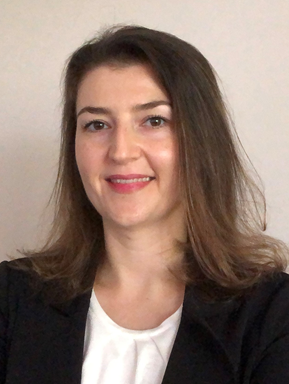 Dr. Tugba Erpek is a Lead Scientist at Networks and Security Division at Intelligent Automation, Inc. (IAI). She received her Ph.D. degree in Electrical and Computer Engineering from Virginia Tech. Her research interests include wireless communications, 5G communications systems, physical layer security, beamforming, network slicing, cognitive radio, dynamic spectrum sharing, machine learning, and network protocol design and implementation. She served on TPCs of major IEEE conferences on wireless communications and networks.
Dr. Tugba Erpek is a Lead Scientist at Networks and Security Division at Intelligent Automation, Inc. (IAI). She received her Ph.D. degree in Electrical and Computer Engineering from Virginia Tech. Her research interests include wireless communications, 5G communications systems, physical layer security, beamforming, network slicing, cognitive radio, dynamic spectrum sharing, machine learning, and network protocol design and implementation. She served on TPCs of major IEEE conferences on wireless communications and networks.
 MICHELE ZORZI (F’07) received the Laurea and Ph.D.degrees in electrical engineering from the University of Padova in 1990 and 1994, respectively. From 1992 to 1993, he was on leave with the University of California at San Diego (UCSD). After being affiliated with the Dipartimento di Elettronica e Informazione, Politecnico di Milano, the Center for Wireless Communications, UCSD, and the University of Ferrara, in 2003 he joined the faculty of the Information Engineering Department, University of Padova, Italy, where he is currently a Professor. His current research interests include performance evaluation in mobile communications systems, random access in mobile radio networks, ad hoc and sensor networks, energy-constrained communications protocols, 5G millimeter-wave cellular systems, and underwater communications and networking. He was the Editor-in-Chief of IEEE Wireless Communications from 2003 to 2005, the Editor in-Chief of the IEEE Transactions on Communications from 2008 to 2011, and the Founding Editor-in-Chief of the IEEE Transactions on Cognitive Communications and Networks from 2014 to 2018. He was a Guest Editor for several special issues in the IEEE Personal Communications, the IEEE Wireless Communications, the IEEE Network, and the IEEE Journal on Selected Areas in Communications. He served the IEEE Communications Society as a Member at-Large in the Board of Governors from 2009 to 2011, as Director of Education and Training from 2014 to 2015 and as Director of Journals from 2020 to 2021. He received many awards from the IEEE Communications Society, including the Best Tutorial Paper Award in 2008 and 2019, the Education Award in 2016, and the S.O. Rice Best Paper Award in 2018.
MICHELE ZORZI (F’07) received the Laurea and Ph.D.degrees in electrical engineering from the University of Padova in 1990 and 1994, respectively. From 1992 to 1993, he was on leave with the University of California at San Diego (UCSD). After being affiliated with the Dipartimento di Elettronica e Informazione, Politecnico di Milano, the Center for Wireless Communications, UCSD, and the University of Ferrara, in 2003 he joined the faculty of the Information Engineering Department, University of Padova, Italy, where he is currently a Professor. His current research interests include performance evaluation in mobile communications systems, random access in mobile radio networks, ad hoc and sensor networks, energy-constrained communications protocols, 5G millimeter-wave cellular systems, and underwater communications and networking. He was the Editor-in-Chief of IEEE Wireless Communications from 2003 to 2005, the Editor in-Chief of the IEEE Transactions on Communications from 2008 to 2011, and the Founding Editor-in-Chief of the IEEE Transactions on Cognitive Communications and Networks from 2014 to 2018. He was a Guest Editor for several special issues in the IEEE Personal Communications, the IEEE Wireless Communications, the IEEE Network, and the IEEE Journal on Selected Areas in Communications. He served the IEEE Communications Society as a Member at-Large in the Board of Governors from 2009 to 2011, as Director of Education and Training from 2014 to 2015 and as Director of Journals from 2020 to 2021. He received many awards from the IEEE Communications Society, including the Best Tutorial Paper Award in 2008 and 2019, the Education Award in 2016, and the S.O. Rice Best Paper Award in 2018.
 Michele Polese is an Associate Research Scientist at Northeastern University, Boston, since March 2020, working with Tommaso Melodia. He received his Ph.D. at the Department of Information Engineering of the University of Padova in 2020 under the supervision of with Michele Zorzi. He also was an adjunct professor and postdoctoral researcher in 2019/2020 at the University of Padova. During his Ph.D., he visited New York University (NYU), AT&T Labs in Bedminster, NJ, and Northeastern University, Boston, MA. He collaborated with several academic and industrial research partners, including Intel, InterDigital, NYU, AT&T Labs, University of Aalborg, King's College and NIST.
Michele Polese is an Associate Research Scientist at Northeastern University, Boston, since March 2020, working with Tommaso Melodia. He received his Ph.D. at the Department of Information Engineering of the University of Padova in 2020 under the supervision of with Michele Zorzi. He also was an adjunct professor and postdoctoral researcher in 2019/2020 at the University of Padova. During his Ph.D., he visited New York University (NYU), AT&T Labs in Bedminster, NJ, and Northeastern University, Boston, MA. He collaborated with several academic and industrial research partners, including Intel, InterDigital, NYU, AT&T Labs, University of Aalborg, King's College and NIST.
He was awarded with the Best Journal Paper Award of the IEEE ComSoc Technical Committee on Communications Systems Integration and Modeling (CSIM) 2019, the Outstanding Young Researcher Award 2019 from the IEEE ComSoc EMEA Region, the Best Paper Award at WNS3 2019 and 2020, and the IEEE MedComNet Mario Gerla Best Paper Award 2020. His research interests are in the analysis and development of protocols and architectures for future generations of cellular networks (5G and beyond), in particular for millimeter-wave communication, and in the performance evaluation of complex networks.
Jessica Bridgland is a communications engineer specializing in cellular technologies at the Johns Hopkins Applied Physics Lab (JHU/APL). She has experience working on a variety of projects concerning LTE and 5G in the senior leader and tactical user communities.
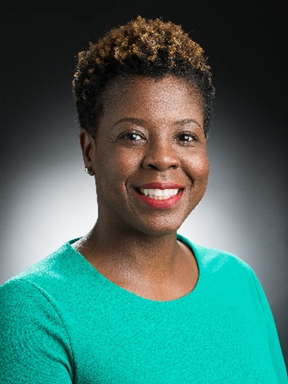 Dr. Cherita Corbett is a member of Senior Professional Staff in the Communication and Networking Systems Group at The Johns Hopkins University Applied Physics Lab. She has over 20 years of professional experience as a research scientist and network security engineer in mobile wireless networks, communication protocols, and cyber security. She has published over 30 technical manuscripts and holds a U.S. patent in cyber security. She holds a Ph.D. in Electrical & Computer Engineering from Georgia Institute of Technology.
Dr. Cherita Corbett is a member of Senior Professional Staff in the Communication and Networking Systems Group at The Johns Hopkins University Applied Physics Lab. She has over 20 years of professional experience as a research scientist and network security engineer in mobile wireless networks, communication protocols, and cyber security. She has published over 30 technical manuscripts and holds a U.S. patent in cyber security. She holds a Ph.D. in Electrical & Computer Engineering from Georgia Institute of Technology.
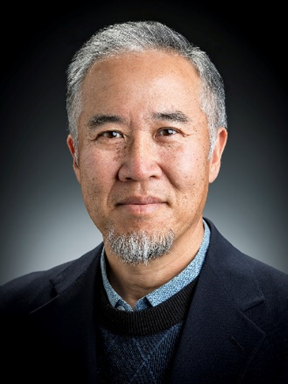 Warren Kim is a Principal Professional Staff at JHU/APL who leads and supports research and development and conducts assessments of advanced networking and communication concepts. Warren has been helping to ensure that senior leaders and national security and emergency preparedness users are able to communicate under all conditions.
Warren Kim is a Principal Professional Staff at JHU/APL who leads and supports research and development and conducts assessments of advanced networking and communication concepts. Warren has been helping to ensure that senior leaders and national security and emergency preparedness users are able to communicate under all conditions.
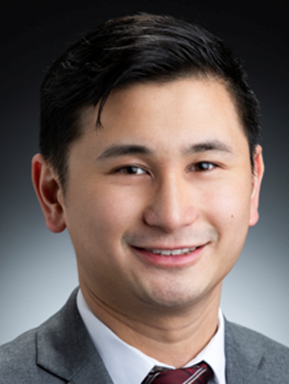 Ryan Pepito is a communications engineer and researcher at JHU/APL. His technical work involves building testbeds with the capability to support 5G research. His 5G research interests include the 5G Core architecture, 5G dual connectivity, NFV, SDN, and MEC.
Ryan Pepito is a communications engineer and researcher at JHU/APL. His technical work involves building testbeds with the capability to support 5G research. His 5G research interests include the 5G Core architecture, 5G dual connectivity, NFV, SDN, and MEC.
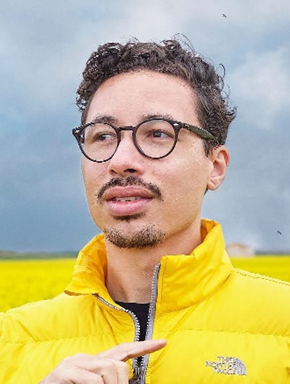 Steven Platt (M'17) received the B.S. degree in Electronic Systems Technologies from Southern Illinois University, Carbondale, IL, USA in 2007, an MBA degree from Illinois State University, Normal, IL, USA in 2012, and a M.S. degree in wireless communications jointly from the Universitat Pompeu Fabra and the Universitat Politècnica de Catalunya, Barcelona, Spain in 2018. He is currently pursuing the Ph.D. degree in information and communications technologies engineering from the Universitat Pompeu Fabra, Barcelona, Spain.
Steven Platt (M'17) received the B.S. degree in Electronic Systems Technologies from Southern Illinois University, Carbondale, IL, USA in 2007, an MBA degree from Illinois State University, Normal, IL, USA in 2012, and a M.S. degree in wireless communications jointly from the Universitat Pompeu Fabra and the Universitat Politècnica de Catalunya, Barcelona, Spain in 2018. He is currently pursuing the Ph.D. degree in information and communications technologies engineering from the Universitat Pompeu Fabra, Barcelona, Spain.
From 2007 to 2012, he was an IT Analyst with Caterpillar Inc. Between 2012 and 2013, he was a Network Engineer at Salesforce.com, and from 2013 to 2017, a Systems Engineer at Twitter.com. Since 2018, he has been a researcher in the Network Technologies and Strategies research group at the Universitat Pompeu Fabra. His research interests include wireless communications, distributed ledger technologies, and decentralized access and resource sharing in wireless networks.
 John S. Baras is a Distinguished University Professor and holds the endowed Lockheed Martin Chair in Systems Engineering at the Institute for Systems Research and the Department of Electrical and Computer Engineering of the University of Maryland College Park. He received his Ph.D. degree in Applied Mathematics from Harvard University in 1973. From 1985 to 1991, he was the Founding Director of the Institute for Systems Research and since 1992 he has been the Director of the Maryland Center for Hybrid Networks, which he co-founded. He is a Fellow of IEEE, SIAM, AAAS, NAI, IFAC, AIAA, AMS, Member of the National Academy of Inventors and a Foreign Member of the Royal Swedish Academy of Engineering Sciences. Major honors and awards include: 1980 George Axelby Award from the IEEE Control Systems Society; 2006 Leonard Abraham Prize from the IEEE Communications Society; 2017 IEEE Simon Ramo Medal; 2017 AACC Richard E. Bellman Control Heritage Award; 2018 AIAA Aerospace Communications Award. In 2016 he was inducted in the Univ. of Maryland A. J. Clark School of Engineering Innovation Hall of Fame. In 2018 he was awarded a Doctorate Honoris Causa by the National Technical University of Athens, Greece. He has been awarded twenty patents and honored worldwide with many awards as innovator and leader of economic development
John S. Baras is a Distinguished University Professor and holds the endowed Lockheed Martin Chair in Systems Engineering at the Institute for Systems Research and the Department of Electrical and Computer Engineering of the University of Maryland College Park. He received his Ph.D. degree in Applied Mathematics from Harvard University in 1973. From 1985 to 1991, he was the Founding Director of the Institute for Systems Research and since 1992 he has been the Director of the Maryland Center for Hybrid Networks, which he co-founded. He is a Fellow of IEEE, SIAM, AAAS, NAI, IFAC, AIAA, AMS, Member of the National Academy of Inventors and a Foreign Member of the Royal Swedish Academy of Engineering Sciences. Major honors and awards include: 1980 George Axelby Award from the IEEE Control Systems Society; 2006 Leonard Abraham Prize from the IEEE Communications Society; 2017 IEEE Simon Ramo Medal; 2017 AACC Richard E. Bellman Control Heritage Award; 2018 AIAA Aerospace Communications Award. In 2016 he was inducted in the Univ. of Maryland A. J. Clark School of Engineering Innovation Hall of Fame. In 2018 he was awarded a Doctorate Honoris Causa by the National Technical University of Athens, Greece. He has been awarded twenty patents and honored worldwide with many awards as innovator and leader of economic development
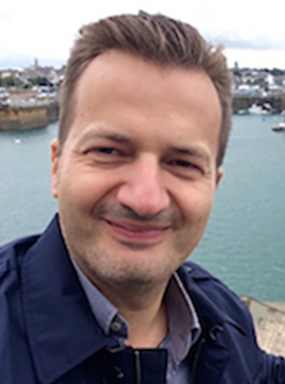 Dr. N. Sklavos is an Associate Professor, with Computer Engineering and Informatics Department (CEID), Polytechnic School, University of Patras, Hellas. He is Director of SCYTALE Group. His research interests include Cryptographic Engineering, Hardware Security, Cyber Security, and Embedded Systems. He has participated to a number of European/National, Research and Development Projects. He is Evaluator/Reviewer of project calls, funded by the European Commission, or National Resources. He has participated to the organization of international scientific conferences, of IEEE/ACM/IFIP, serving several committee duties, as well as Editorial Board Member of several Scientific Journals. He has authored technical papers, books, chapters, reports etc, in the areas of his research. He has been also Keynote/Invited Speaker for conferences, forums, summer schools etc. His publications have received a great number of citations, in scientific and technical literature. He is Senior Member of IEEE, Associated Member of HiPEAC, and Member of IACR.
Dr. N. Sklavos is an Associate Professor, with Computer Engineering and Informatics Department (CEID), Polytechnic School, University of Patras, Hellas. He is Director of SCYTALE Group. His research interests include Cryptographic Engineering, Hardware Security, Cyber Security, and Embedded Systems. He has participated to a number of European/National, Research and Development Projects. He is Evaluator/Reviewer of project calls, funded by the European Commission, or National Resources. He has participated to the organization of international scientific conferences, of IEEE/ACM/IFIP, serving several committee duties, as well as Editorial Board Member of several Scientific Journals. He has authored technical papers, books, chapters, reports etc, in the areas of his research. He has been also Keynote/Invited Speaker for conferences, forums, summer schools etc. His publications have received a great number of citations, in scientific and technical literature. He is Senior Member of IEEE, Associated Member of HiPEAC, and Member of IACR.
| Presentation Time | Presentation Title | Authors |
| 11:00 am | Bit Hopping for High Assurance Networks with 5G Components | Rajeev Gopal (Hughes Network Systems, LLC, USA) |
| 11:20 am | Small Apertures for Long Wavelengths: Enabling Low VHF on Autonomous Agents | Brian Sadler (Army Research Laboratory, USA) |
| 11:40 am | 5G Network Slicing and testing it's security | Craig A Hendricks (Anritsu, USA) |
| 12:10 pm | Single User Massive MIMO | Kasturi Vasudevan (Indian Institute of Technology Kanpur, India); A. Phani Kumar Reddy (Indian Institute of Technology Kanpur (IITK), India); Shivani Singh (Indian Institute of Technology, India); Gyanesh Pathak (IIT Kanpur, India) |
| 1:00 pm | Efficient Testing of first responder networks on legacy technologies and 5G simultaneously | Chintan Fafadia ( & PCTEL, USA); David Adams (USA) |
| 1:20 pm | Verifying 5G Beam Coverage in 3D | Nathan Ryan Harmon (Keysight Technologies, USA) |
| 1:50 pm | United spectrum, united network | Red Grasso (North Carolina Department of Information Technology, USA) |
| 2:10 pm | Rohde & Schwarz 5G solutions for critical communications | Andreas Roessler (Rohde & Schwartz) |
*NOTE: All times are Eastern Time U.S.
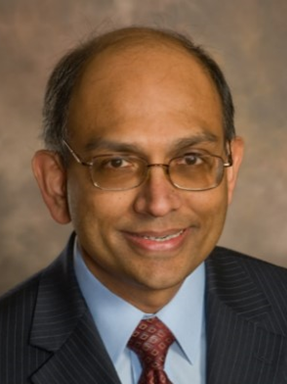 Dr. Rajeev Gopal, vice president, at Hughes Network Systems, LLC (HUGHES), leads the company’s advanced engineering programs, developing innovative solutions for resilient and protected communications in defense applications. Dr. Gopal’s work spans Low Earth Orbit (LEO) and Geostationary Orbit (GEO) High-Throughput Satellite (HTS) technologies, leveraging artificial intelligence (AI), machine learning (ML), cloud, and cyber security innovations.
Dr. Rajeev Gopal, vice president, at Hughes Network Systems, LLC (HUGHES), leads the company’s advanced engineering programs, developing innovative solutions for resilient and protected communications in defense applications. Dr. Gopal’s work spans Low Earth Orbit (LEO) and Geostationary Orbit (GEO) High-Throughput Satellite (HTS) technologies, leveraging artificial intelligence (AI), machine learning (ML), cloud, and cyber security innovations.
In more than 25 years at Hughes, Dr. Gopal has held a variety of leadership roles in satellite network systems engineering and software development. Most recently, he has focused on AI/ML, software-defined networking, 5G, and enterprise management architectures. Prior to joining Hughes, Dr. Gopal led automation projects for clinical and cancer research and development at CTIS.
Dr. Gopal holds several patents and has published more than 40 technical papers. A member of the IEEE 5G World Forum, he serves on the editorial board of Wiley’s International Journal of Satellite Communications and Networking (IJSCN). Dr. Gopal earned a Doctor of Philosophy Degree in Computer Science from Vanderbilt University in Nashville, Tennessee, and a Bachelor of Engineering Degree in Electrical Engineering from the Birla Institute of Technology & Science (BITS) in Pilani, India.
 Brian M. Sadler (Fellow, IEEE) received the B.S. and M.S. degrees from the University of Maryland, College Park, and the PhD degree from the University of Virginia, Charlottesville, all in electrical engineering. He is the US Army Senior Scientist for Intelligent Systems, and a Fellow of the Army Research Laboratory (ARL) in Adelphi, MD. He is an IEEE Communications Society Distinguished Lecturer for 2020-2021, was an IEEE Signal Processing Society Distinguished Lecturer for 2017-2018, and general co-chair of IEEE GlobalSIP’16. He has been an Associate Editor of the IEEE Transactions on Signal Processing, IEEE Signal Processing Letters, and EURASIP Signal Processing, and a Guest Editor for several journals including the IEEE JSTSP, the IEEE JSAC, IEEE T-RO, the IEEE SP Magazine, Autonomous Robots, and the International Journal of Robotics Research. He received Best Paper Awards from the IEEE Signal Processing Society in 2006 and 2010, several ARL and Army R&D awards, and a 2008 Outstanding Invention of the Year Award from the University of Maryland. He has over 450 publications in these areas with 16,800 citations and h-index of 55. His research interests include information science, and networked and autonomous intelligent systems.
Brian M. Sadler (Fellow, IEEE) received the B.S. and M.S. degrees from the University of Maryland, College Park, and the PhD degree from the University of Virginia, Charlottesville, all in electrical engineering. He is the US Army Senior Scientist for Intelligent Systems, and a Fellow of the Army Research Laboratory (ARL) in Adelphi, MD. He is an IEEE Communications Society Distinguished Lecturer for 2020-2021, was an IEEE Signal Processing Society Distinguished Lecturer for 2017-2018, and general co-chair of IEEE GlobalSIP’16. He has been an Associate Editor of the IEEE Transactions on Signal Processing, IEEE Signal Processing Letters, and EURASIP Signal Processing, and a Guest Editor for several journals including the IEEE JSTSP, the IEEE JSAC, IEEE T-RO, the IEEE SP Magazine, Autonomous Robots, and the International Journal of Robotics Research. He received Best Paper Awards from the IEEE Signal Processing Society in 2006 and 2010, several ARL and Army R&D awards, and a 2008 Outstanding Invention of the Year Award from the University of Maryland. He has over 450 publications in these areas with 16,800 citations and h-index of 55. His research interests include information science, and networked and autonomous intelligent systems.
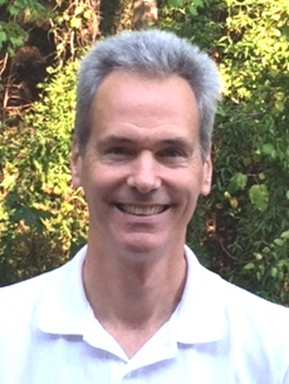 Craig Hendrick is a Senior Market Development Manager for Anritsu. With thirty-six years of engineering experience in test & measurement, and thirty of those years focused on wireless communications, Craig is truly a technology expert in the industry. He joined Anritsu Company in 1992 and throughout his career has held various technical roles in field applications engineering and engineering management. Craig holds a Bachelor of Science in Electrical Engineering (BSEE) from the University of Missouri at Rolla (now Missouri University of Science and Technology). He currently resides in North Carolina.
Craig Hendrick is a Senior Market Development Manager for Anritsu. With thirty-six years of engineering experience in test & measurement, and thirty of those years focused on wireless communications, Craig is truly a technology expert in the industry. He joined Anritsu Company in 1992 and throughout his career has held various technical roles in field applications engineering and engineering management. Craig holds a Bachelor of Science in Electrical Engineering (BSEE) from the University of Missouri at Rolla (now Missouri University of Science and Technology). He currently resides in North Carolina.
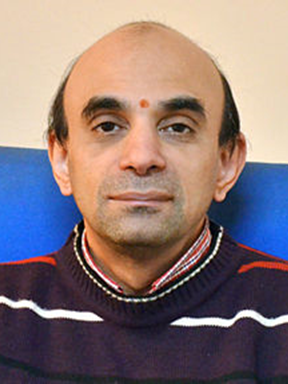 K. Vasudevan completed his Bachelor of Technology (Honours) from the department of Electronics and Electrical Communication Engineering, IIT Kharagpur, India, in the year 1991, and his MS and PhD from the department of Electrical Engineering, IIT Madras, in the years 1996 and 2000 respectively. During 1991–1992, he was employed with the Indian Telephone Industries Ltd, Bangalore, India, as Assistant Executive Engineer. He was a Post Doctoral Fellow at the Mobile Communications Lab, EPFL, Switzerland, between Dec 1999 and Dec 2000, and an engineer at Texas Instruments, Bangalore, between Jan 2001 and June 2001. Since July 2001, he has been a faculty at the Electrical department at IIT Kanpur, where he is now a full Professor. His interests lie in the area of telecommunications and signal processing. He has authored three books, namely, Digital Communications and Signal Processing, CRC Press, Analog Communications: Problems & Solutions, Springer and Basic Electronics: Problems & Solutions, Ane Books. He has published many articles in journals and conferences. He is a Senior Member of the IEEE and the Editor-in-Chief of Semiconductor Science and Information Devices, Bilingual Publishing, Singapore. He was nominated for the Marquis Who's Who Lifetime Achievement Award in 2019.
K. Vasudevan completed his Bachelor of Technology (Honours) from the department of Electronics and Electrical Communication Engineering, IIT Kharagpur, India, in the year 1991, and his MS and PhD from the department of Electrical Engineering, IIT Madras, in the years 1996 and 2000 respectively. During 1991–1992, he was employed with the Indian Telephone Industries Ltd, Bangalore, India, as Assistant Executive Engineer. He was a Post Doctoral Fellow at the Mobile Communications Lab, EPFL, Switzerland, between Dec 1999 and Dec 2000, and an engineer at Texas Instruments, Bangalore, between Jan 2001 and June 2001. Since July 2001, he has been a faculty at the Electrical department at IIT Kanpur, where he is now a full Professor. His interests lie in the area of telecommunications and signal processing. He has authored three books, namely, Digital Communications and Signal Processing, CRC Press, Analog Communications: Problems & Solutions, Springer and Basic Electronics: Problems & Solutions, Ane Books. He has published many articles in journals and conferences. He is a Senior Member of the IEEE and the Editor-in-Chief of Semiconductor Science and Information Devices, Bilingual Publishing, Singapore. He was nominated for the Marquis Who's Who Lifetime Achievement Award in 2019.
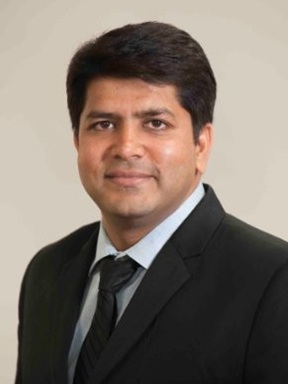 Chintan Fafadia is Sr. Director of Product Management for PCTEL's 5G and cloud-based test and measurement solutions. He has over 15 years of in the wireless industry, specializing in network test and measurement. At PCTEL, Chintan has played a key role in the development of the company's 4G and 5G testing solutions over the past decade, serving in a variety of product management and business development roles. He holds an Executive MBA from Robert Smith School of Business and a Master of Science from the University of Texas at Dallas.
Chintan Fafadia is Sr. Director of Product Management for PCTEL's 5G and cloud-based test and measurement solutions. He has over 15 years of in the wireless industry, specializing in network test and measurement. At PCTEL, Chintan has played a key role in the development of the company's 4G and 5G testing solutions over the past decade, serving in a variety of product management and business development roles. He holds an Executive MBA from Robert Smith School of Business and a Master of Science from the University of Texas at Dallas.
 David Adam's career has focused on solutions for Service Quality and Performance Management of Mobile Networks. Working closely with the leading US mobile operators to understand their unique needs and requirements led to the creation of patented concepts and approaches. As solutions architect and product manager, I managed the design and deployment of a number of ground breaking solutions, continuing close cooperation with the operators to determine effective application of the solutions, thus driving high penetration rates of the solutions across the industry.
David Adam's career has focused on solutions for Service Quality and Performance Management of Mobile Networks. Working closely with the leading US mobile operators to understand their unique needs and requirements led to the creation of patented concepts and approaches. As solutions architect and product manager, I managed the design and deployment of a number of ground breaking solutions, continuing close cooperation with the operators to determine effective application of the solutions, thus driving high penetration rates of the solutions across the industry.
Recent concentration has been on the Public Safety Networks, both legacy P25 and FirstNet LTE technologies. The critical nature of properly performing service to first responders means test solution in new and more rigorous requirements. A special focus is on in building coverage and performance, delivering a cost effective solution to ensure buildings comply with national and AHJ standards.
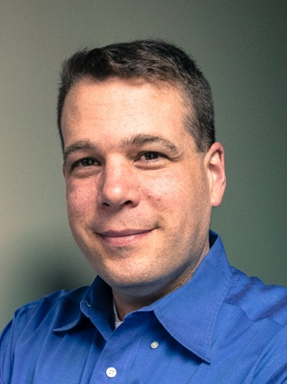 Red Grasso is the Director of the First Responder Emerging Technologies (FirstTech) Program at the State of NC. Red also serves as the FirstNet Single Point of Contact (SPOC) for North Carolina and is currently involved in several projects at the national level with DHS S&T, DHS CISA ECD, and the FCC. He spent a decade as a firefighter in North Carolina before moving into the technologies and working to deploy a regional P25 radio system in Missouri. Focusing on public safety communications, he has served in many roles at different levels of government including disaster response at the local, state, and federal levels. His bachelor’s degree is in Emergency and Disaster Management and is a graduate of the Community Preparedness and Disaster Management program at UNC-CH. Red is also responsible for the communications system at the annual Burning Man event in Nevada.
Red Grasso is the Director of the First Responder Emerging Technologies (FirstTech) Program at the State of NC. Red also serves as the FirstNet Single Point of Contact (SPOC) for North Carolina and is currently involved in several projects at the national level with DHS S&T, DHS CISA ECD, and the FCC. He spent a decade as a firefighter in North Carolina before moving into the technologies and working to deploy a regional P25 radio system in Missouri. Focusing on public safety communications, he has served in many roles at different levels of government including disaster response at the local, state, and federal levels. His bachelor’s degree is in Emergency and Disaster Management and is a graduate of the Community Preparedness and Disaster Management program at UNC-CH. Red is also responsible for the communications system at the annual Burning Man event in Nevada.
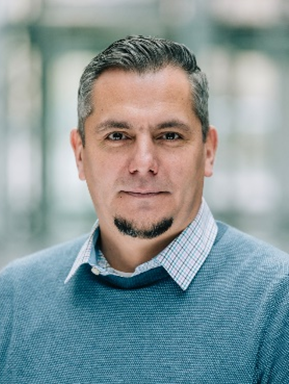 Andreas Roessler is working as a Technology Manager for Rohde & Schwarz, a premium supplier of test and measurement solutions to the wireless industry, headquartered in Munich, Germany. As a technology manager he focuses on 3GPP’s 5G New Radio (NR) standard and advancing 6G research topics, where his responsibilities include strategic marketing and product portfolio development for the entire value chain offered by Rohde & Schwarz test and measurement division. By following industry trends and the standardization process for cellular communication standards very carefully, he gained more than 15 years of experience in the mobile industry and wireless technologies. He holds a MSc in electrical engineering, with a focus in wireless communication.
Andreas Roessler is working as a Technology Manager for Rohde & Schwarz, a premium supplier of test and measurement solutions to the wireless industry, headquartered in Munich, Germany. As a technology manager he focuses on 3GPP’s 5G New Radio (NR) standard and advancing 6G research topics, where his responsibilities include strategic marketing and product portfolio development for the entire value chain offered by Rohde & Schwarz test and measurement division. By following industry trends and the standardization process for cellular communication standards very carefully, he gained more than 15 years of experience in the mobile industry and wireless technologies. He holds a MSc in electrical engineering, with a focus in wireless communication.
| Presentation Time | Presentation Title | Authors |
| 11:00 am | Communications for Dynamic First Responder Teams in Emergency Response | Jiachen Chen (WINLAB, Rutgers University, USA); K. K. Ramakrishnan (University of California, Riverside, USA) |
| 11:20 am | Supporting NS/EP Priority Services in Wi-Fi Networks | Subir Das (Perspecta Labs); John Wullert and Kiran Rege (Perspecta Labs Inc, USA); Frank Suraci (Emergency Communications Division, DHS/CISA, USA); An Nguyen (Emergency Communications Division, DHS/CISA, USA) |
| 11:40 am | Stochastic Geometry-based Analysis of LEO Satellite Communication Systems | Anna Talgat and Mustafa A Kishk (King Abdullah University of Science and Technology, Saudi Arabia) |
| 12:00 pm | Broadcast TV and the new ATSC 3.0 Standard | John Contestabile (Skyline Technology Solutions), Sesh Simha (Sinclair) |
| 1:00 pm | Vendor Talk | Darren McCarthy (Rohde & Schwartz) |
| 1:15 pm | US BORDER CONTROL: Dynamic 5G-Network Services for Time-critical Multi-source Sensor Fusion | Shashi Phoha (Applied Research Laboratory, Penn State University, USA |
| 1:35 pm | A Dynamic-data-driven First Responder Management Strategy: Border Surveillance, Hurricane, and Man-made Disaster | Young-Jun Son (The University of Arizona, USA) |
| 1:55 pm | DDDAS Solutions for Border Patrol and Emergency Response Environments | Frederica Darema (USA); Erik Blasch (Air Force Research Lab, USA) |
| 2:15 pm | Concerns with SRVCC handover from 5G to 3G for emergency services | Amar N Ray (ATT&C & Other, USA); Cadathur Chakravarthy (ATT&C, USA) |
*NOTE: All times are Eastern Time U.S.
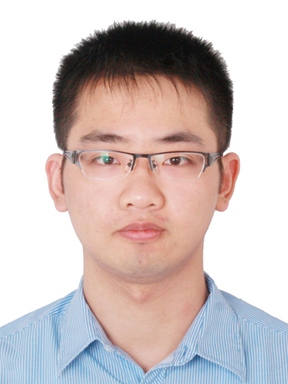 Jiachen Chen is a Postdoctoral Associate at WINLAB, Rutgers University. He received the B.E. and M.E. degrees in Software Engineering from Fudan University, China, and Ph.D. degree in computer science from University of Göttingen, Germany. His research interests are in the area of Information-Centric Networks (ICN), Internet of Things (IoT), cloud computing, and network management.
Jiachen Chen is a Postdoctoral Associate at WINLAB, Rutgers University. He received the B.E. and M.E. degrees in Software Engineering from Fudan University, China, and Ph.D. degree in computer science from University of Göttingen, Germany. His research interests are in the area of Information-Centric Networks (ICN), Internet of Things (IoT), cloud computing, and network management.
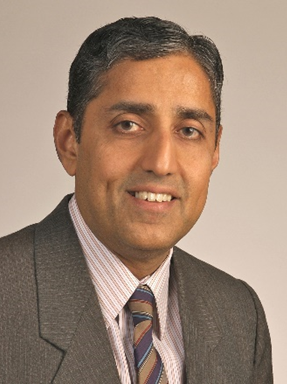 Dr. K. K. Ramakrishnan is Professor of Computer Science and Engineering at the University of California, Riverside. Previously, he was a Distinguished Member of Technical Staff at AT&T Labs-Research. He joined AT&T Bell Labs in 1994 and was with AT&T Labs-Research since its inception in 1996. Prior to 1994, he was a Technical Director and Consulting Engineer in Networking at Digital Equipment Corporation. Between 2000 and 2002, he was at TeraOptic Networks, Inc., as Founder and Vice President.
Dr. K. K. Ramakrishnan is Professor of Computer Science and Engineering at the University of California, Riverside. Previously, he was a Distinguished Member of Technical Staff at AT&T Labs-Research. He joined AT&T Bell Labs in 1994 and was with AT&T Labs-Research since its inception in 1996. Prior to 1994, he was a Technical Director and Consulting Engineer in Networking at Digital Equipment Corporation. Between 2000 and 2002, he was at TeraOptic Networks, Inc., as Founder and Vice President.
Dr. Ramakrishnan is an ACM Fellow, IEEE Fellow and an AT&T Fellow, recognized for his fundamental contributions on communication networks, congestion control, traffic management, VPN services, and a lasting impact on AT&T and the industry. His work on the "DECbit" congestion avoidance protocol received the ACM Sigcomm Test of Time Paper Award in 2006. He has published nearly 300 papers and has 183 patents issued in his name. K.K. has been on the editorial board of several journals and has served as the TPC Chair and General Chair for several networking conferences. K. K. received his MTech from the Indian Institute of Science (1978), MS (1981) and Ph.D. (1983) in Computer Science from the University of Maryland, College Park, USA.
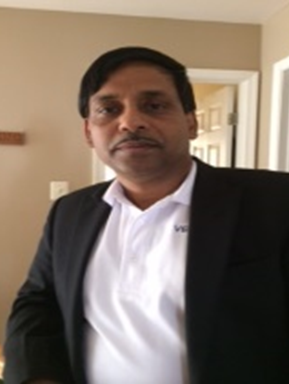 Dr. Subir Das is a Chief Scientist at Perspecta Labs Basking Ridge, New Jersey, USA and has more than 25 years of research and development experience. His areas of interests are Mobile Wireless IP Networking (3G/4G/5G) and Security, Low power Personal Area Networking, WLAN and Edge Networking, Industrial Control System and Internet of Things (IoT) security.
Dr. Subir Das is a Chief Scientist at Perspecta Labs Basking Ridge, New Jersey, USA and has more than 25 years of research and development experience. His areas of interests are Mobile Wireless IP Networking (3G/4G/5G) and Security, Low power Personal Area Networking, WLAN and Edge Networking, Industrial Control System and Internet of Things (IoT) security.
Dr. Das is responsible for developing strategic programs, researching new technologies and transitioning such technologies. Dr. Das is a leading contributor to various Standards (e.g., IEEE, IETF, 3GPP and ZigBee). He is currently leading the NS/EP priority access activity in IEEE 802.11. He is also an Executive Member of the IEEE 802 LAN/MAN Standards Committee and holds a leadership position in the ZigBee Alliance. Dr. Das developed protocols in IETF and held leadership positions in the past. He was actively involved in developing Cellular (3G/4G (LTE)) networking technologies in 3GPP. Dr. Das has published nearly 100 papers, 5 IETF RFCs and has been granted 30 US patents.
Previously, Dr. Das worked in Telcordia Technologies Inc and Bell Communication Research in Piscataway, New Jersey with various Research Scientist positions. Dr. Das is a recipient of the 2009 IEEE Region I Award for outstanding contribution to Next Generation Wireless Networks, Protocols and its Standardization Efforts. He served as a member in the National Science Foundation, USA, and the National Science and Engineering Council, Canada award review committees. Dr. Das is a frequent speaker and an organizer of Industry Panels in IEEE and other international conferences. He is a member of the IEEE and a reviewer of IEEE and ACM journals and technical magazines.
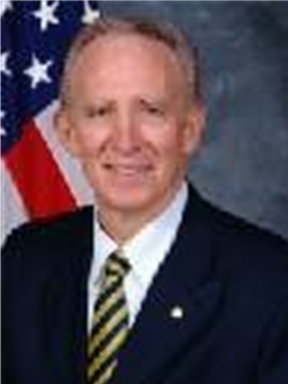 Mr. Frank Suraci serves as the Program Manager for the Government Emergency Telecommunications Service/Wireless Priority Service, currently assigned to the Federal Government’s Emergency Communications Division in the Cybersecurity and Infrastructure Security Agency, DHS. He has served in a management capacity for the Government Emergency Telecommunications Service (GETS) and the Wireless Priority Service Programs for over twenty years. He has been responsible for taking GETS from a concept in 1990 to the operational service it is today. Mr. Suraci has more than 30 years of experience in the telecommunications management field.
Mr. Frank Suraci serves as the Program Manager for the Government Emergency Telecommunications Service/Wireless Priority Service, currently assigned to the Federal Government’s Emergency Communications Division in the Cybersecurity and Infrastructure Security Agency, DHS. He has served in a management capacity for the Government Emergency Telecommunications Service (GETS) and the Wireless Priority Service Programs for over twenty years. He has been responsible for taking GETS from a concept in 1990 to the operational service it is today. Mr. Suraci has more than 30 years of experience in the telecommunications management field.
For the past 25 years, he has represented DHS at the ATIS Next Generation Interconnection Interoperability Forum in coordinating nationwide rollouts of various network priority signaling features supporting both GETS and WPS. He continues to enhance these National Security and Emergency Preparedness (NS/EP) services through interaction with the telecommunications industry to ensure that the service is available to authorized users when required. Currently supporting the Wi-Fi priority access initiative in IEEE 802.11 Working Group. Previously, Mr. Suraci worked in the Command, Control and Communications area for the Defense Communications Agency (DCA), now known as the Defense Information Systems Agency (DISA), supporting White House communications and Joint Staff activities. Mr. Suraci also served on the White House Convergence Working Group providing inputs on the impact of Network Convergence on NS/EP Communications.
Mr. Suraci holds a Bachelor in Electrical Engineering from the Catholic University of America and completed graduate work at Penn State University and George Washington University. Mr. Suraci is an active participant in professional organizations, including the IEEE and the AFCEA where he is a distinguished life member and has co-authored articles in both organizations’ publications.
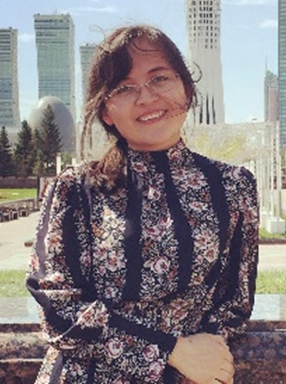 Anna Talgat is currently a Ph.D. student in the Communication Theory Lab (CTL) under the supervision of Prof. Mohamed-Slim Alouini at King Abdullah University of Science and Technology (KAUST). She received a B.Sc. degree from Fatih University, Turkey, and M.Sc degree from KAUST in 2015 and 2020, respectively. Her research focuses on stochastic geometry, LEO satellite communications.
Anna Talgat is currently a Ph.D. student in the Communication Theory Lab (CTL) under the supervision of Prof. Mohamed-Slim Alouini at King Abdullah University of Science and Technology (KAUST). She received a B.Sc. degree from Fatih University, Turkey, and M.Sc degree from KAUST in 2015 and 2020, respectively. Her research focuses on stochastic geometry, LEO satellite communications.
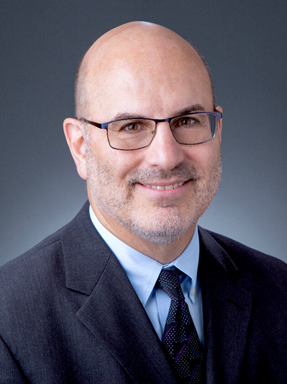 John M. Contestabile is the Director of Public Safety Solutions at Skyline Technology Solutions. He works closely with the public safety community providing consulting services and developing solutions to meet their operational needs. These solutions can involve cyber security, video interoperability, communications and network operations.
John M. Contestabile is the Director of Public Safety Solutions at Skyline Technology Solutions. He works closely with the public safety community providing consulting services and developing solutions to meet their operational needs. These solutions can involve cyber security, video interoperability, communications and network operations.
He joined Skyline in 2019 after 10 years with Johns Hopkins University - Applied Physics Lab where he was the Program Manager for Homeland Security/Emergency Response Systems. In that capacity he worked with various government sponsors (DHS – S&T, CISA, FEMA, FirstNet) to develop technology projects to meet their needs related to: transportation security, critical infrastructure resilience, and interoperable communications (to include Geographic Information, Wireless Broadband and Video Systems)
Prior to that, he served for over 30 years with the State of Maryland Department of Transportation [MDOT] in a variety of technical/engineering and management roles raising to the position of Acting Assistant Secretary for Administration. In that role he was responsible for the engineering, procurement, emergency management, homeland security and human resource functions. In addition to working at MDOT, Mr. Contestabile was named by Maryland Governor O’Malley as the Director of the Maryland Statewide Communications Interoperability Program, reporting to the Superintendent of the Maryland State Police. Previously, Mr. Contestabile served on assignment with the Governor’s Office during the Ehrlich administration as the Acting Deputy Director of the Office of Homeland Security.
Mr. Contestabile currently participates on a number of committees including: Chair of the Resilience Section for the Transportation Research Board [TRB], Chair of the National Public Safety Telecommunications Council [NPSTC] Video Technology Advisory Committee, and member of the Department of Homeland Security - Science and Technology Directorate Video Quality in Public Safety [VQiPS] leadership team. He recently completed a three-year appointment to the District of Columbia - Homeland Security Commission. In November of 2017, Mr. Contestabile was appointed by Maryland Governor Hogan as a member of the Washington Metrorail Safety Commission.
Mr. Contestabile was also a former board member of the Public Safety Spectrum Trust [PSST], who held the national license for the 700 MHz National Public Safety Broadband system [e.g. “FirstNet”]. He is a former Vice Chair of the American Association of State Highway and Transportation Officials [AASHTO] Special Committee on Transportation Security and Emergency Management, a former member of the National Infrastructure Advisory Committee [NIAC] Transportation Resilience work group, as well as a former member of the Department of Homeland Security’s “Safecom” Interoperable Communications Advisory Committee.
He belongs to several organizations including: the All Hazards Consortium, the American Society of Civil Engineers, the International Association of Emergency Managers, the Maryland Emergency Management Association, the National Public Safety Telecommunications Consortium, the International Association of Chiefs of Police and the National Domestic Preparedness Coalition.
He holds a Master of Business Administration degree from the University of Baltimore (UB) in Baltimore, Maryland and a Bachelor of Science in Civil Engineering from Worcester Polytechnic Institute (WPI) in Worcester, Massachusetts.
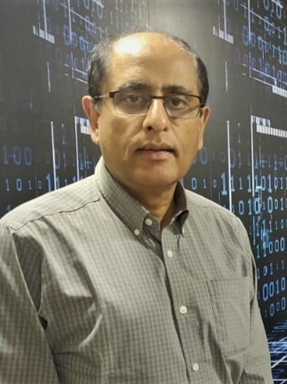 Sesh Simha is Vice President of Advanced Technology at Sinclair Broadcast’s ONEMedia subsidiary. He is involved in the global development of ATSC 3.0 and of wireless mobile broadcast and multicast.
Sesh Simha is Vice President of Advanced Technology at Sinclair Broadcast’s ONEMedia subsidiary. He is involved in the global development of ATSC 3.0 and of wireless mobile broadcast and multicast.
He manages the Company’s activities in India, which are critical to the success of realizing this convergence. This includes software-defined radio chipset development, device development and engagement with government, carriers, broadcasters and manufacturers. Most recently, he manages the design, production and deployment of Mark ONE, the first reference ATSC 3.0 smartphone. Sesh has 35 years of experience in the satellite, wireless and media verticals. He managed the introduction of new products and services at SES, Teleglobe, INTELSAT and Hughes Network Systems. He is a graduate of IIT Bombay and the University of Michigan.
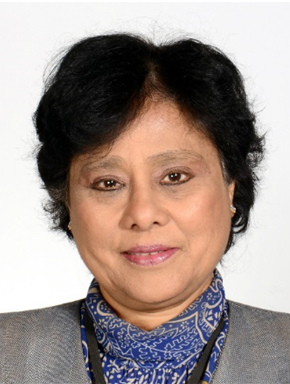 Dr. Shashi Phoha’s research interests are in computational sciences that enable dependable distributed automation of multiple interacting devices using dynamic data for sensor networks. She has held senior technical and management positions in academia, government, and industry. She was the Director of a premier national laboratory, the Information Technology Laboratory (ITL) of the National Institute of Standards and Technology (NIST), which conducts research in Computational Sciences, Computer Security, Software, Advanced Networking, Information Access, and Mathematical and Statistical Engineering. Since 1991, she has held the dual titles of Professor of Electrical Engineering at the Pennsylvania State University and the Director of the Division of Information Sciences and Technology at its Applied Research Laboratory. Prior to that, she was the Director of C4I and Systems Analysis Division of the Computer Sciences Corporation where she led the development of the Global Transportation Network for DoD. In 2004, she was awarded the Technical Achievement Award by the IEEE Computer Society. She has authored over 200 research papers, three books including one on Sensor Network Operations, and has several patents licensed to industry. She is the Chief Editor of The Journal of Artificial Intelligence and Robotics: Sensor Fusion and Machine Perception. She was the Guest Editor of Special Issues of IEEE Transactions (TMC) on Mission-oriented Sensor Networks, an associate editor of the IEEE Transactions on Systems, Man, and Cybernetics for five years and is editor of the International Journal of Distributed Sensor Networks. She received her M.S. in Operations Research from Cornell University (1973) and Ph.D. from Michigan State University (1976).
Dr. Shashi Phoha’s research interests are in computational sciences that enable dependable distributed automation of multiple interacting devices using dynamic data for sensor networks. She has held senior technical and management positions in academia, government, and industry. She was the Director of a premier national laboratory, the Information Technology Laboratory (ITL) of the National Institute of Standards and Technology (NIST), which conducts research in Computational Sciences, Computer Security, Software, Advanced Networking, Information Access, and Mathematical and Statistical Engineering. Since 1991, she has held the dual titles of Professor of Electrical Engineering at the Pennsylvania State University and the Director of the Division of Information Sciences and Technology at its Applied Research Laboratory. Prior to that, she was the Director of C4I and Systems Analysis Division of the Computer Sciences Corporation where she led the development of the Global Transportation Network for DoD. In 2004, she was awarded the Technical Achievement Award by the IEEE Computer Society. She has authored over 200 research papers, three books including one on Sensor Network Operations, and has several patents licensed to industry. She is the Chief Editor of The Journal of Artificial Intelligence and Robotics: Sensor Fusion and Machine Perception. She was the Guest Editor of Special Issues of IEEE Transactions (TMC) on Mission-oriented Sensor Networks, an associate editor of the IEEE Transactions on Systems, Man, and Cybernetics for five years and is editor of the International Journal of Distributed Sensor Networks. She received her M.S. in Operations Research from Cornell University (1973) and Ph.D. from Michigan State University (1976).
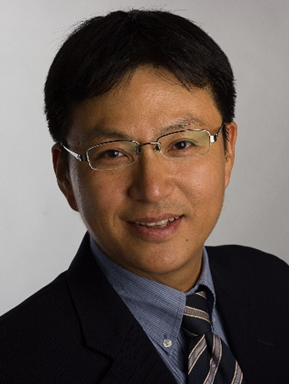 Young-Jun Son is a Professor and Department Head of Systems and Industrial Engineering at University of Arizona. His research focuses on a data-driven, multi-scale, simulation and decision model needed for design and control in various applications, including extended manufacturing enterprise, homeland security, healthcare, and social network. He has authored/co-authored over 97 journal papers and 100 conference papers. He is a Fellow of Institute of Industrial and Systems Engineers (IISE), and has received the Society of Manufacturing Engineers (SME) 2004 Outstanding Young ME Award, the IIE 2005 Outstanding Young IE Award, the IISE Annual Meeting Best Paper Awards (2005, 2008, 2009, 2016, 2018, 2019), and Best Paper of the Year Award in 2007 from International Journal of IE. His research activities have been funded by NSF, AFOSR, DOT/FHWA, US Department of Energy/AZ Commerce Authority, USDA, NIST, Sandia National Lab, Science Foundation of Arizona, Boeing, Samsung, Motorola, Raytheon, Tucson Electric Power, Microsoft, and several application software companies. He is a Department Editor for IISE Transactions, on the editorial board for seven additional journals. He was the vice chair and secretary for the SISO Core Manufacturing Simulation Data (CMSD) Standard Product Development Group. He has served as co-Program Chair for ISERC 2007, the General Chair for INFORMS Annual Meeting 2018, and the General Chair for Winter Simulation Conference 2019.
Young-Jun Son is a Professor and Department Head of Systems and Industrial Engineering at University of Arizona. His research focuses on a data-driven, multi-scale, simulation and decision model needed for design and control in various applications, including extended manufacturing enterprise, homeland security, healthcare, and social network. He has authored/co-authored over 97 journal papers and 100 conference papers. He is a Fellow of Institute of Industrial and Systems Engineers (IISE), and has received the Society of Manufacturing Engineers (SME) 2004 Outstanding Young ME Award, the IIE 2005 Outstanding Young IE Award, the IISE Annual Meeting Best Paper Awards (2005, 2008, 2009, 2016, 2018, 2019), and Best Paper of the Year Award in 2007 from International Journal of IE. His research activities have been funded by NSF, AFOSR, DOT/FHWA, US Department of Energy/AZ Commerce Authority, USDA, NIST, Sandia National Lab, Science Foundation of Arizona, Boeing, Samsung, Motorola, Raytheon, Tucson Electric Power, Microsoft, and several application software companies. He is a Department Editor for IISE Transactions, on the editorial board for seven additional journals. He was the vice chair and secretary for the SISO Core Manufacturing Simulation Data (CMSD) Standard Product Development Group. He has served as co-Program Chair for ISERC 2007, the General Chair for INFORMS Annual Meeting 2018, and the General Chair for Winter Simulation Conference 2019.
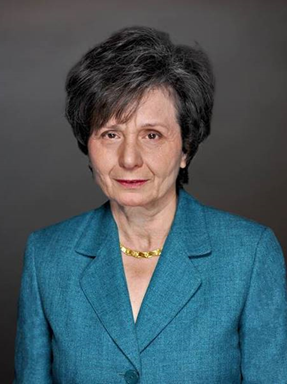 Dr. Frederica Darema, a Senior Executive Service member (SES), retired in January 2019 as the Director of the Air Force Office of Scientific Research. In that position she led the entire basic research investment for the AF, an over $500 million investment portfolio on revolutionary research impacting the future AF and transitioning the discoveries to defense industries & broader commercial sector. Dr. Darema is a graduate of the U of Athens, Greece (BS/Mathematics & Physics), the Illinois Inst of Tech (MS/Nuclear Physics), and UCDavis (PhD/Nuclear Physics), and was a Fulbright Scholar and a Distinguished Scholar. After Physics Research positions at the U of Pittsburgh and Brookhaven Nat’l Lab, she was Technical Staff Member at Schlumberger (SDR). Subsequently, she has held management and executive level positions: at the T.J. Watson IBM Research Center& the IBM Corporate Strategy Group; at NSF and 2-years at DARPA; and was Director of the AFOSR Directorate for Information, Math& Life Sciences, and afterwards Director of AFSOR.
Dr. Frederica Darema, a Senior Executive Service member (SES), retired in January 2019 as the Director of the Air Force Office of Scientific Research. In that position she led the entire basic research investment for the AF, an over $500 million investment portfolio on revolutionary research impacting the future AF and transitioning the discoveries to defense industries & broader commercial sector. Dr. Darema is a graduate of the U of Athens, Greece (BS/Mathematics & Physics), the Illinois Inst of Tech (MS/Nuclear Physics), and UCDavis (PhD/Nuclear Physics), and was a Fulbright Scholar and a Distinguished Scholar. After Physics Research positions at the U of Pittsburgh and Brookhaven Nat’l Lab, she was Technical Staff Member at Schlumberger (SDR). Subsequently, she has held management and executive level positions: at the T.J. Watson IBM Research Center& the IBM Corporate Strategy Group; at NSF and 2-years at DARPA; and was Director of the AFOSR Directorate for Information, Math& Life Sciences, and afterwards Director of AFSOR.
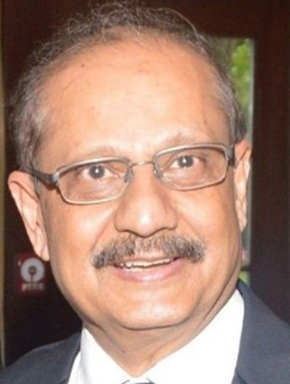 Amar Nath Ray has started his career as a Visiting Faculty of KU (University of Kansas), Lawrence, USA in the department of physics from where he got his second masters and Ph.D on experimental solid state physics. Later he joined Sprint as a principal member of technical staff and moved to Century Link as the lead network engineer. He has also worked as the director of networks for the Teletech team (T3) before starting his own company, ATT&C. Amar has one hundred and fifty-six approved & pending US patents and they are available online. He has participated in different telecom standard committees and has served as the chair for TIA TR-41.3.12 subcommittee.
Amar Nath Ray has started his career as a Visiting Faculty of KU (University of Kansas), Lawrence, USA in the department of physics from where he got his second masters and Ph.D on experimental solid state physics. Later he joined Sprint as a principal member of technical staff and moved to Century Link as the lead network engineer. He has also worked as the director of networks for the Teletech team (T3) before starting his own company, ATT&C. Amar has one hundred and fifty-six approved & pending US patents and they are available online. He has participated in different telecom standard committees and has served as the chair for TIA TR-41.3.12 subcommittee.
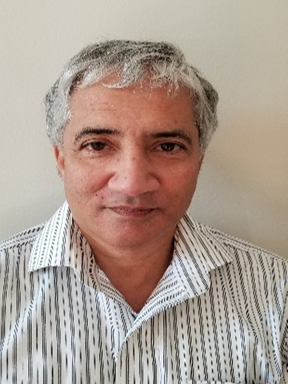 C.V. Chakravarthy had been a faculty in Telecommunications Engineering from 1975 - 1997 holding positions at the Indian Institute of Technology, Kharagpur, Indian Institute of Science, Bangalore & Stevens Institute of Technology. From 1997 until 2015 he was with Sprint/Embarq/Centurylink (Now Lumen Technologies) as a network engineer. Subsequent to retirement from Centurylink was a faculty member at the Univ of Central Missouri (Warrensburg). He obtained the degree of B.Sc (Physics/Mathematics) from the University of Bangalore, B.E & M.E from the Indian Institute of Science & the Ph.D from the Indian Institute of Technology, Kharagpur.
C.V. Chakravarthy had been a faculty in Telecommunications Engineering from 1975 - 1997 holding positions at the Indian Institute of Technology, Kharagpur, Indian Institute of Science, Bangalore & Stevens Institute of Technology. From 1997 until 2015 he was with Sprint/Embarq/Centurylink (Now Lumen Technologies) as a network engineer. Subsequent to retirement from Centurylink was a faculty member at the Univ of Central Missouri (Warrensburg). He obtained the degree of B.Sc (Physics/Mathematics) from the University of Bangalore, B.E & M.E from the Indian Institute of Science & the Ph.D from the Indian Institute of Technology, Kharagpur.
| Presentation Time | Presentation Title | Authors |
| 11:00 am | Mission Critical Services for Public safety & Tactical communications | Brian Daly (AT&T) |
| 11:20 am | GSMA Investigation 5G Security | Pieter Veenstra (Net Number) |
| 11:40 am | Technology Gaps and Opportunities for Public Safety Applications | Mehmet Ulema, Doug Zuckerman (IEEE Future Networks) |
| 12:00 pm | UE-to-Network Relay Discovery in ProSe-enabled LTE Networks | David Griffith (NIST) |
| 12:20 pm | Vendor Talk | Qualcomm |
| 1:00 pm | 5G Open RAN Implications for Public Safety Networks | Sameh Yamany (VIAVI Solutions) |
| 1:20 pm | Security of 5G-Enabled Next Generation Critical Communication in Norway | Ravishankar Borgaonkar (SINTEF AS & University of Stavanger, Norway) |
| 1:40 pm | Earthquake Early Warning on 5G uRLLC network | Fabio Graziosi (University of l'Aquila, Italy); Andrea Marotta and Fabio Franchi (University of L'Aquila, Italy) |
| 2:00 pm | Self-organizing future mobile networks – An End-to-End perspective | Meryem Simsek (VMWARE) |
*NOTE: All times are Eastern Time U.S.
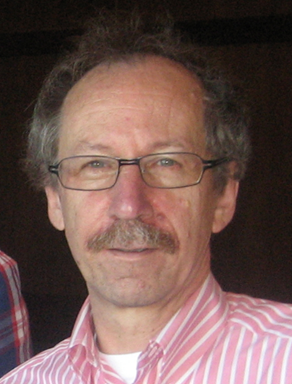 Pieter Veenstra: In his role as Senior Manager Product Development at NetNumber, Pieter’s focus are security and fraud. This refers to 5G security and signaling firewalls that protect mobile roaming traffic. For fraud these are the NetNumber Guaranteed Caller™ solutions for the STIR/SHAKEN variants and the real-time fraud detecting and blocking solutions for Wangiri, Robocalling, IRSF, CLI Refiling and alike.
Pieter Veenstra: In his role as Senior Manager Product Development at NetNumber, Pieter’s focus are security and fraud. This refers to 5G security and signaling firewalls that protect mobile roaming traffic. For fraud these are the NetNumber Guaranteed Caller™ solutions for the STIR/SHAKEN variants and the real-time fraud detecting and blocking solutions for Wangiri, Robocalling, IRSF, CLI Refiling and alike.
End 2019 he was elected for a 2-year term as chairman of the GSMA FASG RIFS group which follows his editorships on Signaling Firewalls for SS7 (FS.11), Diameter (FS.19) and general items (FS.21) to protect international roaming traffic between MNOs. He is also the lead of the investigations in the GSMA on the open issues for 5G Security and being editor in the i3forum on CLI anti-spoofing solutions.
During his 30-yr career at KPN, Pieter held a wide range of key positions as technology expert of SS7, IMS and IPX networks, and assisted the KPN Board of Directors as enterprise architect. For many years, Pieter represented KPN in standardisation of SS7, IMS and IPX in ETSI, ITU and 3GPP. Since 2003 he is guest lecturer at the leading Technical University of Delft. Pieter holds multiple SS7 and IMS patents.
 Dr. Mehmet Ulema is a professor of Computer Information Systems at Manhattan College, New York. Previously, he held management and technical positions in AT&T Bell Laboratories, Bellcore, Daewoo Telecom, and Hazeltine Corporation. Dr. Ulema has more than 30 years of experience in telecommunications as a professor, researcher, systems engineer, project manager, network architect, and software developer.
Dr. Mehmet Ulema is a professor of Computer Information Systems at Manhattan College, New York. Previously, he held management and technical positions in AT&T Bell Laboratories, Bellcore, Daewoo Telecom, and Hazeltine Corporation. Dr. Ulema has more than 30 years of experience in telecommunications as a professor, researcher, systems engineer, project manager, network architect, and software developer.
He has authored numerous papers, book chapters, and organized many special issues in several journals and technical magazines. He has been on the editorial board of a number of journals, including the IEEE Journal of Internet of Things, IEEE Transactions on Network and Service Management, and the Springer Journal of Network and Services Management. Dr. Ulema is the author of a book entitled “Fundamentals of Public Safety Networks and Critical Communications” by Wiley in 2019.
Mehmet was actively involved in standardization in ITU, TIA, ATIS, and IEEE. Mehmet has been a prominent volunteer at IEEE Communications Society (ComSoc) and the IEEE Standard Association (SA). Currently, he is the chair of the IEEE COM/NetSoft Standards Committee and Co-chair of the IEEE Future Network Initiatives’ Standards Working Group. Dr. Ulema has received a number of awards including IEEE ComSoc Harold Sobol Award, IEEE SA Standards Medallion award, and IEEE ComSoc Salah Aidarous Memorial Award.
Dr. Ulema received MS & Ph.D. in Computer Science at Polytechnic University (now the NYU Tandon School of Engineering), Brooklyn, New York, USA. He also received BS & MS degrees at Istanbul Technical University, Turkey.
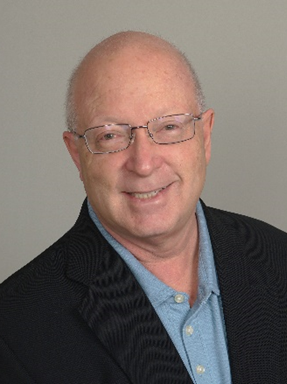 Doug Zuckerman received his BS, MS and PhD degrees from Columbia University (USA) and is an IEEE Life Fellow. His professional experiences at Bell Labs and Telcordia Technologies span the operations, management and engineering of emerging communications technologies, networks and applications. His work heavily influenced standards for management of telecommunications networks. Earlier in his career, with a background in electromagnetics, he contributed to AT&T’s millimeter waveguide transmission system, design of satellite antennas and systems, maintenance requirements and standards for digital transmission systems, operations planning and systems engineering for digital networks, systems and services and optical network interoperability and standardization. His interest in recent years has focused on cloud/fog/edge computing and networking, big data, digital reality and other emerging technologies. Previous leadership roles have included IEEE Communications Society President and Division III (Communications Technology) Director, Optical Internetworking Form OAM&P Working Group Chair and Board member, IEEE representative to the OpenFog Consortium, and various other leadership positions. Currently, he is a consultant for Perspecta Labs (Applied Communications Sciences, previously the Applied Research unit of Telcordia Technologies and before that Bellcore/Bell Labs).
Doug Zuckerman received his BS, MS and PhD degrees from Columbia University (USA) and is an IEEE Life Fellow. His professional experiences at Bell Labs and Telcordia Technologies span the operations, management and engineering of emerging communications technologies, networks and applications. His work heavily influenced standards for management of telecommunications networks. Earlier in his career, with a background in electromagnetics, he contributed to AT&T’s millimeter waveguide transmission system, design of satellite antennas and systems, maintenance requirements and standards for digital transmission systems, operations planning and systems engineering for digital networks, systems and services and optical network interoperability and standardization. His interest in recent years has focused on cloud/fog/edge computing and networking, big data, digital reality and other emerging technologies. Previous leadership roles have included IEEE Communications Society President and Division III (Communications Technology) Director, Optical Internetworking Form OAM&P Working Group Chair and Board member, IEEE representative to the OpenFog Consortium, and various other leadership positions. Currently, he is a consultant for Perspecta Labs (Applied Communications Sciences, previously the Applied Research unit of Telcordia Technologies and before that Bellcore/Bell Labs).
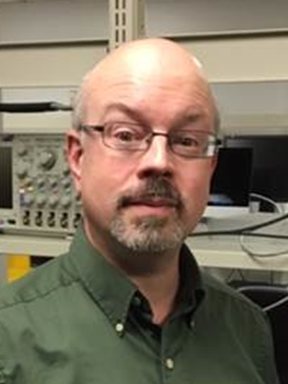 David Griffith is a researcher in the Wireless Networks Division at the National Institute of Standards and Technology (NIST). Prior to his work at NIST he was a senior engineer at Raytheon, where we worked on satellite communications systems. He received the Ph.D. degree in electrical engineering from the University of Delaware in 1998. His research focus is on mathematical modeling and simulation, and his work includes communications systems for the smart grid and the Internet of Things (IoT), public safety communications, and resource allocation for 5G wireless networks.
David Griffith is a researcher in the Wireless Networks Division at the National Institute of Standards and Technology (NIST). Prior to his work at NIST he was a senior engineer at Raytheon, where we worked on satellite communications systems. He received the Ph.D. degree in electrical engineering from the University of Delaware in 1998. His research focus is on mathematical modeling and simulation, and his work includes communications systems for the smart grid and the Internet of Things (IoT), public safety communications, and resource allocation for 5G wireless networks.
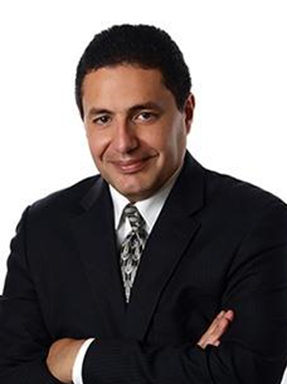 Dr. Sameh Yamany is the Chief Technology Officer of VIAVI where he drives technology innovation and execution with focus on 5G. . He is the former CEO and President of Trendium, where he led innovations in service assurance and analytics and the creation of Customer Experience Assurance (CEA) concept and first to market solution. Dr. Yamany's industry experience also includes his senior executive role at Tektronix Communications where he set the vision and development of the market leading wireless and wireline monitoring and troubleshooting suite of applications. Dr. Yamany worked as an assistant professor at Old Dominion University in Virginia and has a PhD in computer science from University of Louisville. He has authored several patents, and more than 50 journals, conference publications, and book chapters in artificial intelligence, telecommunications and systems engineering.
Dr. Sameh Yamany is the Chief Technology Officer of VIAVI where he drives technology innovation and execution with focus on 5G. . He is the former CEO and President of Trendium, where he led innovations in service assurance and analytics and the creation of Customer Experience Assurance (CEA) concept and first to market solution. Dr. Yamany's industry experience also includes his senior executive role at Tektronix Communications where he set the vision and development of the market leading wireless and wireline monitoring and troubleshooting suite of applications. Dr. Yamany worked as an assistant professor at Old Dominion University in Virginia and has a PhD in computer science from University of Louisville. He has authored several patents, and more than 50 journals, conference publications, and book chapters in artificial intelligence, telecommunications and systems engineering.
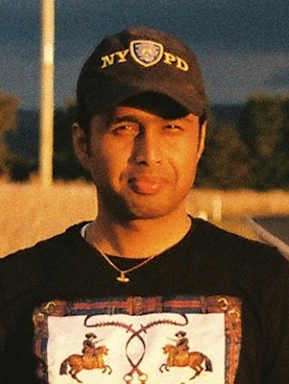 Dr. Ravishankar Borgaonkar works as a research scientist at SINTEF Digital and associate professor II at University of Stavanger in Norway. He holds a PhD in telecommunication security area from Technischen Universität Berlin (TU Berlin, 2013). His primary research themes are related to mobile telecommunication networks and security threats for the next generation of digital communication, ranging from 2G/3G/4G/5G network security to end-user device security. He has extensive experience as a cellular network security domain (at Deutsche Telekom's lab, TU Berlin, Intel Collaborative Research Institute for Secure Computing at Aalto University, & University Oxford), focusing lately on 5G security research. He was the WP leader and technical manager for FP7-ICT NEMESYS (for TU Berlin) and H2020-ICT 5G-ENSURE project (for University of Oxford) before SINTEF. He has found several protocol flaws in 3G/4G/5G technologies (affecting billions of devices) and assisted in improving 4G/5G security standards. Also, he is frequent speaker at several leading security (hacking/academic) conferences and listed in Hall of Fame of Google, Qualcomm, Huawei, & GSMA.
Dr. Ravishankar Borgaonkar works as a research scientist at SINTEF Digital and associate professor II at University of Stavanger in Norway. He holds a PhD in telecommunication security area from Technischen Universität Berlin (TU Berlin, 2013). His primary research themes are related to mobile telecommunication networks and security threats for the next generation of digital communication, ranging from 2G/3G/4G/5G network security to end-user device security. He has extensive experience as a cellular network security domain (at Deutsche Telekom's lab, TU Berlin, Intel Collaborative Research Institute for Secure Computing at Aalto University, & University Oxford), focusing lately on 5G security research. He was the WP leader and technical manager for FP7-ICT NEMESYS (for TU Berlin) and H2020-ICT 5G-ENSURE project (for University of Oxford) before SINTEF. He has found several protocol flaws in 3G/4G/5G technologies (affecting billions of devices) and assisted in improving 4G/5G security standards. Also, he is frequent speaker at several leading security (hacking/academic) conferences and listed in Hall of Fame of Google, Qualcomm, Huawei, & GSMA.
| Presentation Time | Presentation Title | Authors |
| 11:00 am | 5G-SDR: Harnessing the 5G Technology Advances for Tactical Communication Software Defined Radios (SDRs) | Muhammad Danish Nisar (Center for Advanced Studies/Research in Engineering (CASE/CARE), Pakistan & Technical University Munich, TUM, Germany); Hammad Khan (Center for Advanced Studies/Research in Engineering (CASE/CARE), Pakistan) |
| 11:20 am | Vendor Talk | Anritsu |
| 11:35 am | Embedding Military Grade TRANSEC in 5G for Tactical Networks | George F Elmasry (Rockwell Collins, USA) |
| 11:55 am | Potential of 5G Technologies for Land and Maritime Tactical Networks | Germano Capela and Luis, Bastos (NATO Communications and Information Agency) |
| 12:15 pm | Vendor Talk: Challenges of Building a 5G gNodeB | Dr. Paul Moakes (CommAgility) |
| 1:00 pm | Securing 5G is critical and will become a key differentiator | Leonid Burakovsky (Palo Alto Networks) |
| 1:20 pm | Use of Commercial Cellular Networks for Tactical Transport use? | David Theriault (4K Solutions) |
| 1:40 pm | 5G & On The Move Tactical Networks - Making it Work | Kevin Stiles (Oceus Networks) |
| 2:10 pm | Priority-aware Service Placement for 5G Disaster Response | Aaron Paulos (Raytheon) |
*NOTE: All times are Eastern Time U.S.
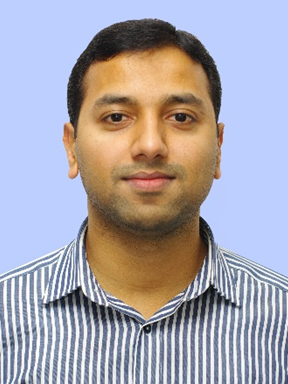 Dr. Danish Nisar (S’05-M’09-SM’20) was born in Karachi, Pakistan in 1982. He completed his bachelors in electrical engineering from the National University of Science and Technology (NUST), Pakistan in 2004, and his Masters and PhD in communication engineering from the Technical University Munich (TUM), Germany respectively in 2006 and 2011, both with honors. In this duration he received scholarships from DAAD and Nokia Siemens Networks, Germany. From 2010 to 2012, he worked at Nomor Research GmbH, as Senior Research Engineer working on EU funded research projects including ARTIST4G, and from 2012 till 2015 at Intel in the Mobile Communications Group as 4G Physical Layer Algorithms Lead. Since 2015, he has been serving as Associate Professor in the electrical and computer engineering department at Center for Advanced Studies in Engineering (CASE).
Dr. Danish Nisar (S’05-M’09-SM’20) was born in Karachi, Pakistan in 1982. He completed his bachelors in electrical engineering from the National University of Science and Technology (NUST), Pakistan in 2004, and his Masters and PhD in communication engineering from the Technical University Munich (TUM), Germany respectively in 2006 and 2011, both with honors. In this duration he received scholarships from DAAD and Nokia Siemens Networks, Germany. From 2010 to 2012, he worked at Nomor Research GmbH, as Senior Research Engineer working on EU funded research projects including ARTIST4G, and from 2012 till 2015 at Intel in the Mobile Communications Group as 4G Physical Layer Algorithms Lead. Since 2015, he has been serving as Associate Professor in the electrical and computer engineering department at Center for Advanced Studies in Engineering (CASE).
Dr. Nisar has been experimenting with various software defined radio (SDR) platforms over the past five years in his lab dealing with wireless communications and networks. He is currently the principal investigator of the project 5G-SDR: A Flexible Solution for Tactical Communications, funded by IGNITE, National Technology Fund, Pakistan. His research interests focus on wireless communications, cellular and tactical communications, and signal processing for communications.
Hammad Ahmed Khan was born in Lahore, Pakistan in 1966. He completed his Bachelors in electrical engineering from University of Engineering and Technology (UET) Lahore in 1990, and his Masters in electrical engineering from Iowa State University, US in 1999. From 1999 to 2001, he worked at Enabling Technologies, a US based startup in the area of communications and networking. Since 2001, he has been with the Center for Advanced Studies in Engineering (CASE) as faculty and a senior member of the Academic Council.
Mr. Khan has done multiple projects in the domain of wireless communications and signal processing, during his stay at CASE. He is currently the co-principal investigator of the project 5G-SDR: A Flexible Solution for Tactical Communications, funded by IGNITE, National Technology Fund, Pakistan. His research interests focus on wireless communications, RF front-end design, and signal processing for communications.
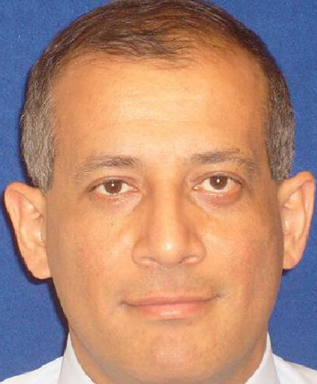 George Elmasry has a Ph. D. in Electrical and Computer Engineering from The New Jersey Institute of Technology with extensive industry and academic experience. George is the winner of the Hashimoto Prize for achievement and academic excellence and is the sole author of two books entitled "Tactical Wireless Communications and Networks, Design Concepts and Challenges," and “Dynamic Spectrum Access: Local, Distributed, Centralized or Hybrid Design”
George Elmasry has a Ph. D. in Electrical and Computer Engineering from The New Jersey Institute of Technology with extensive industry and academic experience. George is the winner of the Hashimoto Prize for achievement and academic excellence and is the sole author of two books entitled "Tactical Wireless Communications and Networks, Design Concepts and Challenges," and “Dynamic Spectrum Access: Local, Distributed, Centralized or Hybrid Design”
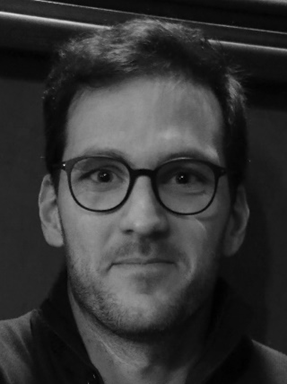 Mr. Germano Capela received his Master degree in Naval and Military Sciences (weapons and electronics) in 2010 from the Portuguese Naval Academy and his Master degree in Electrical Engineering (Major in Telecommunications) from Instituto Superior Técnico - University of Lisbon in 2014. From 2010 to 2012, he was deployed to Portuguese Navy operational units (corvettes and frigates), as Weapons and Electronics Chief Engineer, having performed a wide range of duties, from purely military and operational to very technical ones. From 2012 to 2019, he worked for the Navy's CIS directorate as a radio engineer. He was involved in major procurement projects for safety and strategic naval communications systems. He was also responsible for the operation and maintenance of maritime radio systems, as well as for R&D telecommunication projects. In 2019, Germano joined the NCI Agency as a Senior Scientist, to work in several projects in the area of maritime communications, tactical waveforms, spectrum, 5G and other wireless technologies in support of NATO Capability Development and NATO Policy projects.
Mr. Germano Capela received his Master degree in Naval and Military Sciences (weapons and electronics) in 2010 from the Portuguese Naval Academy and his Master degree in Electrical Engineering (Major in Telecommunications) from Instituto Superior Técnico - University of Lisbon in 2014. From 2010 to 2012, he was deployed to Portuguese Navy operational units (corvettes and frigates), as Weapons and Electronics Chief Engineer, having performed a wide range of duties, from purely military and operational to very technical ones. From 2012 to 2019, he worked for the Navy's CIS directorate as a radio engineer. He was involved in major procurement projects for safety and strategic naval communications systems. He was also responsible for the operation and maintenance of maritime radio systems, as well as for R&D telecommunication projects. In 2019, Germano joined the NCI Agency as a Senior Scientist, to work in several projects in the area of maritime communications, tactical waveforms, spectrum, 5G and other wireless technologies in support of NATO Capability Development and NATO Policy projects.
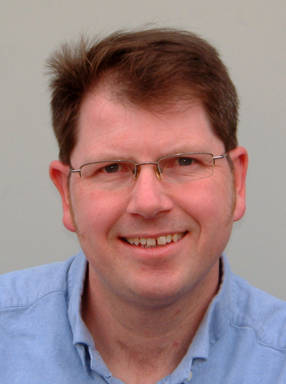 Paul Moakes, PhD CEng MIET, is Chief Technology Officer at CommAgility. He has previously held positions at Motorola and Blue Wave Systems. He is co-inventor of two patents in the field of MicroTCA and AdvancedMC. He holds a PhD in Electrical and Electronic Engineering from Sheffield University and a 1st Class Honours degree in Electronic Communications and Computer Systems Engineering from Bradford University.
Paul Moakes, PhD CEng MIET, is Chief Technology Officer at CommAgility. He has previously held positions at Motorola and Blue Wave Systems. He is co-inventor of two patents in the field of MicroTCA and AdvancedMC. He holds a PhD in Electrical and Electronic Engineering from Sheffield University and a 1st Class Honours degree in Electronic Communications and Computer Systems Engineering from Bradford University.
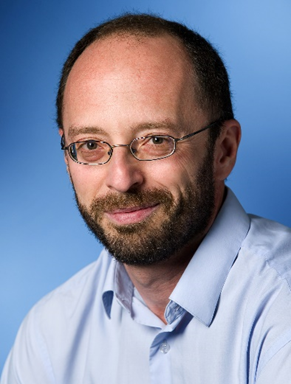 Leonid Burakovsky currently serves as the Senior Director, Product Management at Palo Alto Networks, focusing on the 5G security. Prior to this role, he served as F5 Networks' Senior Director of Strategic Solutions and Juniper Networks' Alliances CTO. Leonid regularly speaks at industry forums such as Mobile World Congress, NGMN Forum, 4G, CTIA, Futurecom, IEEE, BroadbandForum, LTE NA, LTE World, LTE LATAM… to name a few. Leonid also worked at Airslide, Bezeq International, ECI, Alcatel and the Center for Communication Research. Leonid has more than 30 years of industry experience and holds both a Bachelor’s and Master’s degree in Information Systems Engineering.
Leonid Burakovsky currently serves as the Senior Director, Product Management at Palo Alto Networks, focusing on the 5G security. Prior to this role, he served as F5 Networks' Senior Director of Strategic Solutions and Juniper Networks' Alliances CTO. Leonid regularly speaks at industry forums such as Mobile World Congress, NGMN Forum, 4G, CTIA, Futurecom, IEEE, BroadbandForum, LTE NA, LTE World, LTE LATAM… to name a few. Leonid also worked at Airslide, Bezeq International, ECI, Alcatel and the Center for Communication Research. Leonid has more than 30 years of industry experience and holds both a Bachelor’s and Master’s degree in Information Systems Engineering.
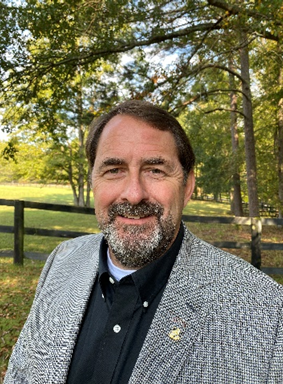 David Theriault is the President and Founder of 4K Solutions, LLC a Midland, Georgia based company started in 2006,4K is a global leader in deployable portable 4G/LTE communications kits. 4K Solutions, LLC specializes in designing and the systems integration of commercial off the shelf (COTS) cellular, networking and radio over ip technologies by the world’s leading manufacturers. 4K Solutions offers our customers a full line of information technology (IT) products and services. and training to the Department of Defense, First Responders, government agencies and commercial customers. 4K Solutions is a SDVOSB CvE.
David Theriault is the President and Founder of 4K Solutions, LLC a Midland, Georgia based company started in 2006,4K is a global leader in deployable portable 4G/LTE communications kits. 4K Solutions, LLC specializes in designing and the systems integration of commercial off the shelf (COTS) cellular, networking and radio over ip technologies by the world’s leading manufacturers. 4K Solutions offers our customers a full line of information technology (IT) products and services. and training to the Department of Defense, First Responders, government agencies and commercial customers. 4K Solutions is a SDVOSB CvE.
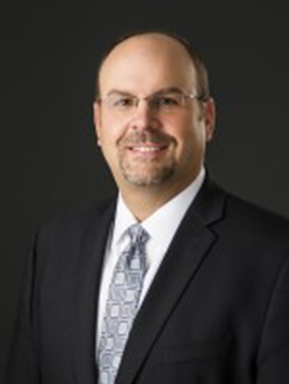 Kevin Stiles is the Chief Technology Officer at Oceus Networks. As CTO, Kevin is responsible for the company’s product development, solutions customization, and systems integration services. His engineering team focuses on the development of secure and scalable 4th Generation (4G) Long Term Evolution (LTE) products, and the integration and delivery of commercial off-the-shelf (COTS) products into customized solutions, including product certifications and accreditations.
Kevin Stiles is the Chief Technology Officer at Oceus Networks. As CTO, Kevin is responsible for the company’s product development, solutions customization, and systems integration services. His engineering team focuses on the development of secure and scalable 4th Generation (4G) Long Term Evolution (LTE) products, and the integration and delivery of commercial off-the-shelf (COTS) products into customized solutions, including product certifications and accreditations.
Kevin brings over 24-years of experience in telecommunications and government contracting and has held various positions from Software Engineer to Vice President of Engineering. Prior to his current role as CTO, Kevin served as Vice President of Engineering at Oceus Networks. Under Kevin’s management, he and his engineering team brought to market Oceus Networks’ award winning Xiphos™ product line, as well as Oceus Networks’ ONmission.
Before joining Oceus Networks, Kevin was Vice President of Ericsson Federal where he was responsible for the site design and delivery of the Ericsson components for a Department of Defense (DOD) satellite program. He was also responsible for the design, development, and deployment of some of the first IP MulitMedia Subsystems (IMS) in North America. As part of Research and Development, he was heavily involved in the design of the first core components of Ericsson’s IMS products.
Kevin holds a Bachelor of Science degree in Computer Science from the University of North Texas and is based out of Oceus Networks’ Plano, Texas office.
 Mr. Aaron Paulos is a senior computer scientist in the distributed systems group at Raytheon BBN Technologies. At BBN, Mr. Paulos researches secure, resilient, and adaptive computing techniques to solve challenges faced by the US Government. Currently, under DARPA I20's Dispersed Computing program he is the principal investigator of the Mission-oriented Adaptive Placement of tasks and data project that is developing novel algorithms and middleware to improve resource management across a wide range of distributed compute environments. He has over 20 publications, 1 patent, and is a member of the IEEE. He holds a M.S. from Carnegie Mellon's Information Networking Institute and a B.S in Computer Science from the University of Pittsburgh.
Mr. Aaron Paulos is a senior computer scientist in the distributed systems group at Raytheon BBN Technologies. At BBN, Mr. Paulos researches secure, resilient, and adaptive computing techniques to solve challenges faced by the US Government. Currently, under DARPA I20's Dispersed Computing program he is the principal investigator of the Mission-oriented Adaptive Placement of tasks and data project that is developing novel algorithms and middleware to improve resource management across a wide range of distributed compute environments. He has over 20 publications, 1 patent, and is a member of the IEEE. He holds a M.S. from Carnegie Mellon's Information Networking Institute and a B.S in Computer Science from the University of Pittsburgh.
| Presentation Time | Presentation Title | Authors |
| 11:00 am | The need for Systems Engineering in developing Tactical/First Responder 5G Networks | William G Scheible (Staff & MITRE Corporation, USA); Susan Ronning (ADCOMM Engineering, USA); Thomas Manley (Downer Defence, Australia) |
| 11:20 am | Heterogeneous Traffic Offloading in Integrated Satellite Terrestrial Networks (ISTN) | Wiem Abderrahim (KAUST, Saudi Arabia) |
| 11:40 am | Vendor Talk | Oceus Networks |
| 11:55 am | Field Testing of 5G Teactical Networks | Raymond Shen (Keysight) |
| 12:15 pm | 5G Innovation for Public Safety | Jamie Italiano (Verizon) |
| 1:00 pm | Designing 5G for Mission Critical Services | Kiran Mukkavilli (Qualcomm) |
| 1:20 pm | High order modulation links: transmitter versus receiver dominated regimes | Doug Kirkpatrick (Eridan Communications) |
| 1:40 pm | State of the Art Heterogeneous Integrated Multi Chip Prototypes | Frank Ferrante (Intel) |
| 2:00 pm | Lessons Learned with Tactical Cellular Applications | Paul Terzulli (PEO C3T) |
*NOTE: All times are Eastern Time U.S.
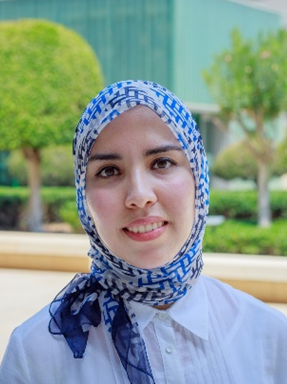 Wiem Abderrahim accomplished her undergraduate studies in electrical engineering at the Higher School of Communications of Tunis, Carthage University, Tunisia in 2013. She received her Ph.D. Degree in Information and Communication Technologies from the same university in 2017. She worked as a lecturer and then as an adjunct professor at the Higher School of Communications of Tunis between 2014 and 2018. Currently, she is a postdoctoral fellow within King Abdullah University of Science and Technology (KAUST), Thuwal, Saudi Arabia. Her research interests include cloud computing, edge computing, network virtualization, software defined networking and recently satellite communications and machine learning.
Wiem Abderrahim accomplished her undergraduate studies in electrical engineering at the Higher School of Communications of Tunis, Carthage University, Tunisia in 2013. She received her Ph.D. Degree in Information and Communication Technologies from the same university in 2017. She worked as a lecturer and then as an adjunct professor at the Higher School of Communications of Tunis between 2014 and 2018. Currently, she is a postdoctoral fellow within King Abdullah University of Science and Technology (KAUST), Thuwal, Saudi Arabia. Her research interests include cloud computing, edge computing, network virtualization, software defined networking and recently satellite communications and machine learning.
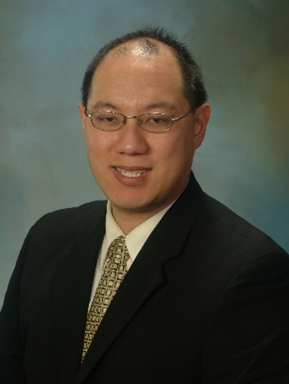 Raymond Shen, PhD is Director of Spectrum and 5G Govt Solutions at Keysight Technologies. In this role he leads Keysight's spectrum monitoring group, managing a vast portfolio of solutions that include handheld, outdoor, and modular platforms, as well as 5G solutions for the government sector. He has over 20 years of experience in spectrum monitoring and cellular signal demodulation. Shen has a BS EE from Caltech and a MS EE and PhD EE from Stanford University, where his PhD focused on neural networks.
Raymond Shen, PhD is Director of Spectrum and 5G Govt Solutions at Keysight Technologies. In this role he leads Keysight's spectrum monitoring group, managing a vast portfolio of solutions that include handheld, outdoor, and modular platforms, as well as 5G solutions for the government sector. He has over 20 years of experience in spectrum monitoring and cellular signal demodulation. Shen has a BS EE from Caltech and a MS EE and PhD EE from Stanford University, where his PhD focused on neural networks.
 Jamie Italiano is an accomplished, highly motivated and collaborative leader in the Product Management organization at Verizon. In this role, Jamie works with sales, solution architects, customers, and partners, Technology and Product Development and Product Management and is responsible for developing and communicating requirements and priorities for the 5G and 5G Edge products and services for the Public Sector segment. This includes customer use cases for 5G solutions, compliance requirements and sizing market demand. Jamie is also the senior product manager for the 5G First Responder Lab. She works with the 5G Labs team to scope the development in the lab to meet the needs of first responders and works with partners on bringing Verizon differentiated products to market.
Jamie Italiano is an accomplished, highly motivated and collaborative leader in the Product Management organization at Verizon. In this role, Jamie works with sales, solution architects, customers, and partners, Technology and Product Development and Product Management and is responsible for developing and communicating requirements and priorities for the 5G and 5G Edge products and services for the Public Sector segment. This includes customer use cases for 5G solutions, compliance requirements and sizing market demand. Jamie is also the senior product manager for the 5G First Responder Lab. She works with the 5G Labs team to scope the development in the lab to meet the needs of first responders and works with partners on bringing Verizon differentiated products to market.
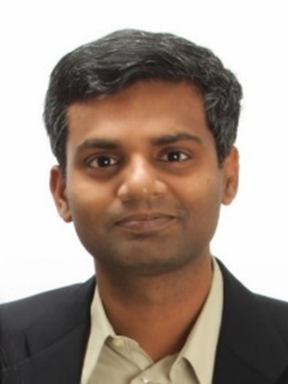 Dr. Kiran Mukkavilli is a Sr. Director of Engineering in Qualcomm Wireless Research where he currently leads the systems research team for sub-7GHz technologies of 5G. He joined Qualcomm in 2003, holds more than 125 granted U.S. patents, and has been involved in system design, standardization, implementation and commercialization of a variety of projects at Qualcomm. He was one of the principal architects of MediaFLO, a mobile broadcast solution from Qualcomm, and played a key role in the product development, standardization and commercialization efforts. He was also the systems design lead responsible for commercialization of the UMTS modem in Qualcomm Snapdragon 800/801 products. In his current role, he is responsible for R&D efforts for PHY/MAC system design, standardization and prototyping for Sub 7GHz aspects of 5G NR. He successfully led Qualcomm’s effort to set up industry’s first end to end 3GPP Rel 15 spec compliant 5G NR call with the leading infra vendors using proto UE implementation. Dr. Mukkavilli received his M.S. and Ph.D. in electrical engineering from Rice University and holds Bachelor of Technology from Indian Institute of Technology, Madras.
Dr. Kiran Mukkavilli is a Sr. Director of Engineering in Qualcomm Wireless Research where he currently leads the systems research team for sub-7GHz technologies of 5G. He joined Qualcomm in 2003, holds more than 125 granted U.S. patents, and has been involved in system design, standardization, implementation and commercialization of a variety of projects at Qualcomm. He was one of the principal architects of MediaFLO, a mobile broadcast solution from Qualcomm, and played a key role in the product development, standardization and commercialization efforts. He was also the systems design lead responsible for commercialization of the UMTS modem in Qualcomm Snapdragon 800/801 products. In his current role, he is responsible for R&D efforts for PHY/MAC system design, standardization and prototyping for Sub 7GHz aspects of 5G NR. He successfully led Qualcomm’s effort to set up industry’s first end to end 3GPP Rel 15 spec compliant 5G NR call with the leading infra vendors using proto UE implementation. Dr. Mukkavilli received his M.S. and Ph.D. in electrical engineering from Rice University and holds Bachelor of Technology from Indian Institute of Technology, Madras.
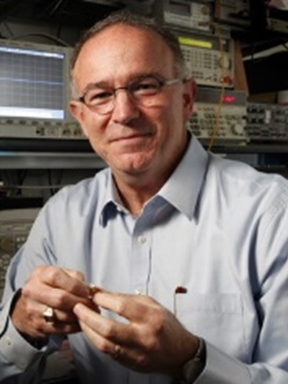 Douglas Kirkpatrick is CEO at Eridan, a Silicon Valley hardware startup building the world's most efficient radios for 5G and beyond. Doug was formerly a VC and Chief Scientist at DARPA, where he led projects ranging from rapid DNA synthesis to real-time holographic displays. Prior to DARPA, Dr. Kirkpatrick was the VP of R&D for Fusion Lighting, a Maryland-based high-efficiency lighting startup, and prior to that a staff scientist and VP at SAIC.
Douglas Kirkpatrick is CEO at Eridan, a Silicon Valley hardware startup building the world's most efficient radios for 5G and beyond. Doug was formerly a VC and Chief Scientist at DARPA, where he led projects ranging from rapid DNA synthesis to real-time holographic displays. Prior to DARPA, Dr. Kirkpatrick was the VP of R&D for Fusion Lighting, a Maryland-based high-efficiency lighting startup, and prior to that a staff scientist and VP at SAIC.
Dr. Kirkpatrick received his BS degree (Physics & Mathematics) from the College of William and Mary (1980) and his Ph.D. from MIT in 1988 (Physics). He is a Fellow of the American Physical Society and has authored more than 30 journal articles and 60 US and international patents.
Sponsors
|
GOLD |
||
 |
 |
 |
| SILVER | ||
 |
 |
 |
 |
||
| BRONZE | ||
 |
||

